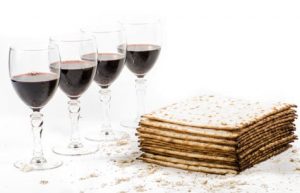
Busy Times
The weeks leading up to Pesach are the US kosher wine industry’s busiest, with more kosher wine purchased during this period than the rest of the year combined. In Israel, Rosh Hashana is nearly as busy a buying season as Pesach and wine buying is also more liberally spread out through the year. Even though the more than 3,000 different kosher wines being produced annually includes almost 100 disparate varieties of Fake Wines like Cream Malaga, Manischewitz, variations of Yayin Patishim and of course the horrid Blue Bottle Abomination, there remain far too many labels for any sane human being to wade through.
Elevated Stress Levels
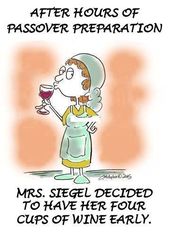 I often discuss the many benefits of kosher wine proliferation; but the enhanced stress levels brought on by cooking commercial grade levels of brisket and matzah balls while attempting to eradicate every speck of dirt from the inside of your oven with a toothbrush highlight one of the few negative aspects of this bounty. With wine such an integral part of the Pesach experience, the massive amount of choices can create a particularly stressful shopping experience as one contemplates the near-endless number of choices on the shelves or webpage of your favorite retailer. Exacerbating the issue are several mitigating circumstances including the sheer number of mediocre-at-best available wines (along with an acceptable amount of true drek) and the unfortunate tendency of many retailers to part you from your hard earned krona by selling these less than worthy wines. Typically stemming from a lack of knowledge, occasionally more sinister reasons are at play so, like in any other transaction, caveat emptor. Other aggravating obstacles include lack of vintage transparency and the oenophilic “bait and switch” – advertising great deals for allocated wines without having them in stock and then selling you copious amounts of sub-par wines. Adding to the fun is the terrible fact that many stores and online purveyors continue to sell wines that are so far past their optimum drinking windows that it’s practically criminal.
I often discuss the many benefits of kosher wine proliferation; but the enhanced stress levels brought on by cooking commercial grade levels of brisket and matzah balls while attempting to eradicate every speck of dirt from the inside of your oven with a toothbrush highlight one of the few negative aspects of this bounty. With wine such an integral part of the Pesach experience, the massive amount of choices can create a particularly stressful shopping experience as one contemplates the near-endless number of choices on the shelves or webpage of your favorite retailer. Exacerbating the issue are several mitigating circumstances including the sheer number of mediocre-at-best available wines (along with an acceptable amount of true drek) and the unfortunate tendency of many retailers to part you from your hard earned krona by selling these less than worthy wines. Typically stemming from a lack of knowledge, occasionally more sinister reasons are at play so, like in any other transaction, caveat emptor. Other aggravating obstacles include lack of vintage transparency and the oenophilic “bait and switch” – advertising great deals for allocated wines without having them in stock and then selling you copious amounts of sub-par wines. Adding to the fun is the terrible fact that many stores and online purveyors continue to sell wines that are so far past their optimum drinking windows that it’s practically criminal.
Help is Here
 Given my belief that wine’s primary purpose as a beverage is to bring pleasure, I have done the work for you and curated my Annual Pesach Kosher Wine Buying Guide from among all the various options out there. Hopefully the Guide will simplify your wine shopping and allow you to get back more important holiday preparations like peeling 6.5 tons of potatoes.
Given my belief that wine’s primary purpose as a beverage is to bring pleasure, I have done the work for you and curated my Annual Pesach Kosher Wine Buying Guide from among all the various options out there. Hopefully the Guide will simplify your wine shopping and allow you to get back more important holiday preparations like peeling 6.5 tons of potatoes.
Following last year’s enhancement, the Guide covers my top recommendations for wines in the following five price tiers: (1) Under $18, (2) between $18-29.99, (3) between $30-49.99, (4) Over $50 and (5) Moshiach Wines. As most of my readers know, Moshiach Wines are wines that I would proudly serve the Moshiach, were I ever sufficiently deserving for him to grace my table.
Many of the wines on this list will not come as a surprise to my regular readers given their perennial appearance over the years resulting from the consistent excellence of their producers and the talent of the applicable winemaker. As years go by and the quality and quantity of top-notch kosher wines grows, the potential wines for this list gets longer, increasing the difficulty in providing this highly-curated list (listing every good wine would defeat the entire purpose of the list). Representing less than 5% of all commercially available kosher wines, the list should go a long way in easing the pain of sifting through all your options. For those desiring further curating, next week’s edition will also include a few of my personal favorites form each of the four different price points / categories. With the quality of white wines increasing year over year there are more white wines on the list than in prior years, especially on in the lower price ranges. If you are one of those unfortunate and self-proclaimed “I don’t drink white wine” people, please take this as an opportunity to try something new – I promise you won’t be disappointed.
The Fine Print
 As a transactional lawyer with more than 15 years of practice under my belt, any guide would be incomplete without a few important caveats.
As a transactional lawyer with more than 15 years of practice under my belt, any guide would be incomplete without a few important caveats.
1. The Guide isn’t intended to be a comprehensive list of every wine I believe worthy of your consideration. It represents a selection of the better wines available across different pricing tiers; each of which I recommend and believe worthy of your Pesach table. As you all know, my weekly missives are titled recommendations since I only write about wines I like. As such, wines previously recommended and not on this list still carry my stamp of approval (unless they are past their recommended drinking window).
2. Broadly speaking, almost every wine made by Flam, Gvaot, Hajdu, Recanati, Tzora and Yatir is worth buying (Dalton and Matar close behind), even if they aren’t listed below. Additionally, many of last year’s wines are still available on the shelves and remain in top drinking condition so check out last year’s list for additional suggestions and/or vintages.
3. Some wines may only be available either in Israel or the US and are marked as such. While there remain a number of wines that remain available only in their indigenous countries (e.g. Four Gates, Hajdu and Shira in the US and Mia Luce in Israel), the vast majority of recommendable Israeli wines are imported to the US these days (Shmita excepting) and most of the Herzog/Royal wines that were formerly “US Only” wines, are exported to Israel, making this list more useful across the broadly disparate geographic location of my 10,000 readers.
4. Due to the disparate geographical disbursement of my reader base, the listed vintages may be different depending on which part of the world your shopping cart is located in (although vintages tend to also shift from local retailer to retailer and distributor to distributor, depending on how much of the prior vintage they have left in stock). Especially for Israeli wines, different vintages are available in Israel and outside of Israel. Where more than one vintage is readily available and still recommendable, I have listed both (I have also noted specific vintages to avoid).
5. It is always best practice to consult me before buying a recommended wine from a different vintage but in this case, given the fluctuation in quality of recent vintages and potential shipping/storage issues, I’d be even more careful than usual when utilizing this list to purchase non-listed vintages.
6. Prices can fluctuate wildly among the various markets so I average to determine the tier each wine falls into. However, listed wines in your local market may not always fall exactly within the listed price points (online price-checking is always a good idea as is asking retailers to match listed prices).
7. To ensure the practical functionality of this list, I have not included wines only available to wine club members and have significantly reduced the number of listed wines that aren’t generally available.
Seder Drinking Conundrum
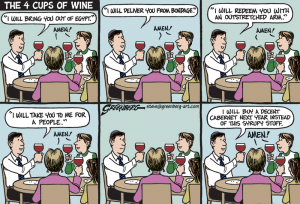
Despite being at the top of any listing of an oenophile’s favorite customs, the tradition to consume four full cups of wine at the Seder brings a host of problems whose solutions can require a bit of advance thought and careful planning.
First and foremost is that four cups of is a lot of wine to consume at one sitting (even for a five hour traditional Seder), especially given the fact that the first two cups are typically imbibed on an empty stomach. Another issue stems from the tradition of using a silver goblet for Kiddush (and the rest of the cups). While the easy solution of pouring the wine into a proper wine glass immediately following the recital of Kiddush works beautifully on a regular Shabbat or holiday, the lengthy Hagada ensures far more contact with the silver during the Seder. Other issues are caused by the common traditions of using only red wine and avoiding mevushal wines during the Seder.
With the Seder representing one of the most important meals on the Jewish calendar, people try to have the nicest (and typically the most expensive) wines possible, creating yet another potential conundrum. Despite being among the kosher wine world’s best, the top tier Bordeaux, Israel and California wines are not going to be properly appreciated giving the hurried manner in which most of the Seder’s four cups are mandated to be consumed. Many of the better wines are full-bodied, oak aged and boldly flavored; attributes not very conducive to Seder drinking. Between the empty stomach with which most people approach the first two cups, the halachik requirement to consume nearly an entire cup of wine rather rapidly and the need to keep a roomful of over-stimulated children from re-enslaving us all; most Sederim offer far-from-ideal conditions for enjoying such magnificent wines.
The Perfect Solution
 Therefore, I suggest saving the more expensive wines for leisurely drinking during Shulchan Aruch (i.e. the actual meal) and the plethora of subsequent holiday meals while finding other worthy options for the four cups. Being a traditionalist, my personal custom is sticking with red wines for all four cups (although Rosé is a terrific compromise on all fronts), while using a few basic principles to choose the proper wines. Despite the less than adequate conditions mandated by our traditions, Seder night is one of the most exalted evenings we get to spend in G-d’s company, while celebrating our freedom from oppressive slavery and the coalescing of the Jewish People into a nation with collective responsibility for one another. As such top quality wine is still a pre-requisite. The tradition of large family gatherings that started with the first Seder continues unabated today, often resulting in a widely disparate range of palate preferences. Given the large numbers, to satisfy all comers (and to avoid fielding the inevitable questions about the horrid blue bottled abomination), I focus on affordable medium bodied quality wines that are highly approachable and enjoyable even without any oenophilic sophistication. Over the years, my “go-to” Seder wines have included Israeli Petite Sirah from Dalton and Recanati, Spanish wines from Capcanes and ElviWines like the Peraj Petita and Rioja and Galil Mountain’s Yiron. To the extent you are looking for well-priced and versatile white (or Rosé); good bets will be Rosé from Netofa, Recanati and Dalton, Sauvignon Blanc from Yarden, Covenant and Goose Bay, Pinot Grigio from Yarden and Dalton, Jacques Capsouto’s Eva Blanc and Carmel’s Riesling under the Kayoumi label. The Nik Weis Riesling would be a great fit as well but personally, I’m not going to be consuming German wine at the Seder.
Therefore, I suggest saving the more expensive wines for leisurely drinking during Shulchan Aruch (i.e. the actual meal) and the plethora of subsequent holiday meals while finding other worthy options for the four cups. Being a traditionalist, my personal custom is sticking with red wines for all four cups (although Rosé is a terrific compromise on all fronts), while using a few basic principles to choose the proper wines. Despite the less than adequate conditions mandated by our traditions, Seder night is one of the most exalted evenings we get to spend in G-d’s company, while celebrating our freedom from oppressive slavery and the coalescing of the Jewish People into a nation with collective responsibility for one another. As such top quality wine is still a pre-requisite. The tradition of large family gatherings that started with the first Seder continues unabated today, often resulting in a widely disparate range of palate preferences. Given the large numbers, to satisfy all comers (and to avoid fielding the inevitable questions about the horrid blue bottled abomination), I focus on affordable medium bodied quality wines that are highly approachable and enjoyable even without any oenophilic sophistication. Over the years, my “go-to” Seder wines have included Israeli Petite Sirah from Dalton and Recanati, Spanish wines from Capcanes and ElviWines like the Peraj Petita and Rioja and Galil Mountain’s Yiron. To the extent you are looking for well-priced and versatile white (or Rosé); good bets will be Rosé from Netofa, Recanati and Dalton, Sauvignon Blanc from Yarden, Covenant and Goose Bay, Pinot Grigio from Yarden and Dalton, Jacques Capsouto’s Eva Blanc and Carmel’s Riesling under the Kayoumi label. The Nik Weis Riesling would be a great fit as well but personally, I’m not going to be consuming German wine at the Seder.
Parting Advice
During this busy buying season, retailers pull out all the stops to bring in your dollars with big sales everywhere. Between the increasing competition and online availability of most top-notch kosher wines, most wine merchants will match any published price, so always ask your favorite retailer to match the prices you have seen elsewhere and, if you aren’t happy with the price – ask for a discount.
With all the explanations behind us, I present my:
Annual Pesach Kosher Wine Buying Guide
Under $17.99
 This range includes many good, enjoyable wines. With few exceptions, these wines aren’t complex or cellar worthy. With oak barrels representing a significant percentage of a wine’s cost (actual cost and the time-value of aging), many of these wines have spent little to know time in oak (although oak chips can provide certain benefits without the heavy costs) contributing to their lower prices. Along with focusing on “Safe Bet” wineries, varieties less popular than Cabernet Sauvignon, Merlot, Syrah and Chardonnay tend to be cheaper given their relative lack of familiarity. As such, Petite Sirah, Carignan, Cabernet Franc, Petit Verdot, Grenache, Roussanne and Gewürztraminer will usually provide better bang for your buck and are good places to look for bargains.
This range includes many good, enjoyable wines. With few exceptions, these wines aren’t complex or cellar worthy. With oak barrels representing a significant percentage of a wine’s cost (actual cost and the time-value of aging), many of these wines have spent little to know time in oak (although oak chips can provide certain benefits without the heavy costs) contributing to their lower prices. Along with focusing on “Safe Bet” wineries, varieties less popular than Cabernet Sauvignon, Merlot, Syrah and Chardonnay tend to be cheaper given their relative lack of familiarity. As such, Petite Sirah, Carignan, Cabernet Franc, Petit Verdot, Grenache, Roussanne and Gewürztraminer will usually provide better bang for your buck and are good places to look for bargains.
Most of the wines on these lists qualify as YH Best Buys (wines especially worthy of your hard-earned cash).
1. Abarbanel, Cabernet Sauvignon, France, 2016 [US / mevushal]
2. Barkan, Classic, Sauvignon Blanc, 2016 [mevushal]
3. Borgo Reale, Cantina Gabriele, Pinot Grigio, 2016 (also 2017 Rose) [both US / mevushal]
4. Borgo Reale, Primitivo Salento, 2014 [US / mevushal]
5. Capcanes, Peraj Petita, 2016 [mevushal option also OK] (also the 2017 Rosé)
 6. Cantina Giuliano, Chianti, 2016 (also 2017 Costa Toscana Vermentino)
6. Cantina Giuliano, Chianti, 2016 (also 2017 Costa Toscana Vermentino)
7. Carmel, Appellation, Cabernet Sauvignon, 2014 (also 2016 Four Vats [Israel])
8. Carmel, Selected, Sauvignon Blanc, 2016 (also Mediterranean Red Blend) [both mevushal]
9. Château Bellerives Dubois, White, Bordeaux, 2016 [US / mevushal]
10. Château Le Petit Chaban, Bordeaux, 2016 [US / mevushal]
11. Château Les Riganes, Bordeaux, 2016 [US / mevushal]
12. Dalton, Estate, Pinot Gris, 2016 (also 2016 Chenin Blanc)
13. Dalton, Estate, Rosé, 2017
14. ElviWines, InVita, 2016 (also 2016 Rioja Semi-Crianza)
15. Golan Heights Winery, Gilgal (Gamla in Israel), Brut, n.v.
16. Golan Heights Winery, Yarden, Pinot Grigio, 2017 (also 2017 Sauvignon Blanc)
17. Goose Bay, Chardonnay, 2016 [mevushal]
18. Gush Etzion, Lone Oak, Sauvignon Blanc, 2016
19. Hagafen, Sauvignon Blanc, 2017 (also Lake County Riesling) [US / mevushal]
20. Herzog, Baron Herzog, Cabernet Sauvignon, Paso Robles, 2016 [mevushal]
21. Herzog, Baron Herzog, Chenin Blanc, Clarksburg, 2016 [mevushal]
22. Jezreel Valley, Levanim, White Blend, 2016
23. Koenig, Riesling, Alsace, 2015 [US / mevushal]
24. Lanzur, Chardonnay, Chile, 2016 (also 2015 Pinot Noir) [US / mevushal]
25. Sainte Beatrice, Instant B, Rosé, 2017 [Europe]
26. Tabor, Mount Tabor, Rosé, 2017
27. Terra Di Seta, Meshi, Rosé, Toscana, 2016 (also 2014 Chianti Classico)
28. Terra Vega, Pinot Noir, Chile, 2016 [mevushal]
29. Tres Buhis, Tempranillo, Yecla Valley, 2016 [US / mevushal]
30. Vitkin, Israel Journey, White, 2016
$18-29.99
This tier is my personal sweet spot and I had over 100 potential wines before I culled the list. As the average price of a quality bottle of kosher wine continues to surge, it’s refreshing to find a number of wineries valiantly trying to hold their ground at affordable. While most great wines remain over $30, there are plenty of great ones here. In general, I find Carmel, Dalton, ElviWines, the Golan Heights Winery, Recanati and the wines under Herzog’s Special Reserve label to be consistent players in price range (while having terrific more expensive wines as well).
1, Amos, Rose, 2017 [Israel (for now)]
2,. Carmel, Single Vineyard, Riesling, Kayoumi, 2014 [US] / 2016 [Israel]
3. Chateau de Parsac, Montagne Saint-Émilion, 2014 [US / mevushal]
4. Château de Beaulieu, Montagne Saint-Émilion, 2012 [US]
5. Château Fourcas Dupre, 2015 [US]
6. Château Picampeau, Saint-Émilion, 2012 [US]
7. Covenant, Mensch, 2016 [US / mevushal] (also 2016 Red C Sauvignon Blanc)
8. Covenant, Zahav, 2016
9. Dalton, Alma, Ivory, 2016 (also 2016 Estate Cabernet Sauvignon)
 10. Dalton, Reserve, Viognier, 2016 (also 2013 Alma Crimson)
10. Dalton, Reserve, Viognier, 2016 (also 2013 Alma Crimson)
11. ElviWines, Herenza, Rioja (Crianza), 2012
12. Eviatar, Petit Verdot, 2014 [Israel]
13. Flam, Blanc, 2017 (also the 2017 Rosé)
14. Golan Heights Winery, Yarden, Blanc de Blanc, 2009 (also 2014 Katzrin Chardonnay)
15. Golan Heights Winery, Yarden, Cabernet Sauvignon, 2014
16. Gush Etzion, Spring River, Red Blend, 2014
17. Gvaot, Jandali, 2016 [Israel]
18. Hagafen, Pinot Noir, Coombsville, 2016 (also 2017 Don Ernesto Rosé [both mevushal]
19. Hagafen, Sauvignon Blanc, 2017 (also 2017 Dry Riesling) [both mevushal]
20. Herzog, Special Reserve, Cabernet Sauvignon, Alexander Valley, 2015 (also 2015 Russian River Chardonnay) [mevushal]
21. Jacques Capsouto, Cotes de Galilee Village, Cuvee Samuel, 2016 (also 2016 Cuvee Marco Blanc)
22. Jezreel, Argaman, 2015 [Israel / Shmita]
23. Kishor, Kerem Kishor, Rosé, 2017 [Israel]
24. Les Marronniers Chablis 2016 [US / mevushal]
25. Lewis Pasco, The Pasco Project, BDX, 2016
26. Matar, Sauvignon Blanc-Semillon, 2016
27. Netofa, Domaine Netofa, Rosé, 2017 (also 2017 Domaine Netofa White) [both Israel]
28. Nik Weis, St. Urbans-Hof, Gefen Hashalom, Riesling, Saar, 2016 [US]
29. Or Haganuz, Amuka, Rosé, 2017
30. Porto Quevedo, Ruby Port, n.v. [US]
31. Recanati, Gris de Marselan, Rosé, 2017 [Israel]
32. Recanati, Mediterranean Reserve, Petite Sirah, 2014
33. Shiloh, Privilege, Winemakers Blend, 2016 [mevushal]
34. Shirah, Vintage Whites, 2016 [US]
35. Tabor, Single Vineyard, Sauvignon Blanc, Yosef, 2016 [Israel]
36. Tura, Mountain Vista, Rose, 2017 (also 2014 Heartland)
37. Tzafona Cellars, Nava. Blanc, 2016 [US / mevushal]
38. Tzora, Judean Hills, White (also Red), 2016
39. Vitkin, Vitkin Series, Petite Sirah, 2015 [Israel / shmita] (also 2016 Pinot Noir)
40. Weingut von Hövel, Riesling, Kabinett, Saar, 2015 [US]
41. Weinstock, Cellar Select, Chardonnay, Clarksburg, 2016 [US / mevushal]
$30-49.99
While a lot of good options sit in this category, many of them really should be priced in the lower range but have crept up in price for no justifiable reason. It’s harder to sell wines in this price range than the one above or below it. It’s also nearly impossible to find a YH Best Buy in this range. As with most higher-end wines, especially those with a year or more of barrel aging, these need time to open up (often the current vintage should be regulated to a few years of aging since it simply isn’t ready for prime-time). In any event, do yourself a favor and get a decanter to ensure that you are obtaining maximum benefit from these wines in the event that you don’t or cannot cellar them before enjoying.
1. Adir, Kerem Ben-Zimra, Cabernet Sauvignon, 2014
2. Bat Shlomo, Regavim, Red Blend, 2016
3. Carmel, Mediterranean, 2012
4. Champagne Drappier, Brut Nature, Pinot Noir, Zero Dosage, n.v. [Europe (for now)]
5. Château Gazin Rocquencourt, Pessac-Léognan, 2015 [US]
6. Château Haut-Brisson, Saint-Émilion, 2014 [US]
7. Château Marquisat de Binet, Cuvee Abel, Montagne St. Émilion, 2012 [US]
8. Covenant, Lavan, Chardonnay, 2014
9. Domaine du Castel, “C”, Chardonnay, 2016 (also 2014 Petite Castel)
 10. Drappier, Carte D’Or, Brut, n.v.
10. Drappier, Carte D’Or, Brut, n.v.
11. ElviWines, EL26, 2015
12. Gvaot, Gofna Reserve, Pinot Noir, 2016 (also 2016 Chardonnay-Cabernet Sauvignon)
13. Hagafen, Brut Rose, 2015 [US / mevushal]
14. Hajdu, Hajdu, Syrah, 2014 (also 2015 Port) [both US]
15. Jacques Capsouto, Cotes de Galilee Village, Cuvee Marco, Grand Vin Rouge, 2014
16. Kishor Vineyards, Riesling (Dry), 2017 (also the 2015 Red Savant [shmita]) [both Israel]
17. Mia Luce, Syrah and Stems, 2015 [Israel / shmita]
18. Netofa, Domaine Netofa, Ruby Port, 2012 [Israel]
19. Netofa, Latour Netofa, Red, 2014
20. Pascal Bouchard, Chablis, 2016 [US / mevushal]
21. Recanati, Special Reserve, Red, 2014 (and 2016 White)
22. Recanati, Mediterranean Reserve, Ancient Grapes, Bituni, 2016 (also 2016 Marawi)
23. Shirah, Black & Blue, Syrah, 2014 (also 2015 Coalition) [US]
24. Terra di Seta, Assai, Chianti Classico, 2012
25. Tzora, Shoresh, Red, 2015 [shmita] / 2016 (also 2016 Shoresh White)
26. Tzora, Or, 2012 [Israel]
27. Yaacov Oryah, Iberian Dream, Gran Reserva, 2011 (also 2015 Eye of the Storm [shmita]) [both Israel]
28. Yaacov Oryah, Old Musketeer, Sweet White Wine, 2008 [Israel / shmita]
29. Yatir, Viognier, 2016
30. Yatir, Syrah, 2013 [also the 2013 Petit Verdot]
Over $50
Over the decade of producing the Guide, many deserving wines were repeatedly excluded because they were priced over $50 and didn’t quite make the exalted “Moshiach Wine” club. Whether any particular wine is “worth it” is a subjective matter with a newsletter all to itself, these are great wines that will bring great pleasure while properly honoring your Pesach experience. Even more than the prior tier, proper aeration and cellaring will have a huge impact of extracting maximum pleasure from these wines.
1. Carmel, Limited Edition, 2012
2. Capcanes, La Flor del Flor, Garnacha (Grenache), 2014
3. Château Grand-Puy Ducasse, Pauillac, 2015
4. Château Haut-Condissas, Médoc, 2014
5. Chateau Malartic Lagraviere, Pessac-Léognan, 2014
6. Château de la Clide, Saint-Émilion, 2011 [US]
7. Château Moulin Riche, Saint Julien, 2015
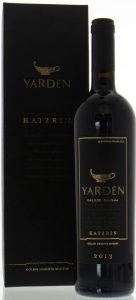 8. Château Tour Saint Christophe, Saint-Émilion, 2014 [US]
8. Château Tour Saint Christophe, Saint-Émilion, 2014 [US]
9. Dalton, Matatia, 2013
10. Domaine Roses Camille, Echo de Roses Camille, Pomerol, 2012 [US]
11. ElviWines, Herenza, Rioja, Reserva, 2009 / 2010 [US]
12. Four Gates, Merlot, La Rochelle, 2013 (also 2013 Cabernet Sauvignon) [US]
13. Goblet Winery, Cabernet Sauvignon, Mendicino County, 2015 [US]
14. Golan Heights Winery, Yarden, Katzrin, 2013
15. Gush Etzion, Blessed Valley, Special Reserve, Red Wine, 2012
16. Gvaot, Masada, 2014
17. Herzog, Generation VIII, Cabernet Sauvignon, Padis Vineyard, Oak Knoll, 2014
18. Herzog, Single Vineyard, Cabernet Sauvignon, Oak Knoll, 2015 (also 2014 Spring Mountain) [US]
19. Matar, CB, 2014
20. Netofa, Dor, 2016 (also the Tel Quasser Red Blend) [both Israel]
21. Shiloh, Mosaic, 2014 [mevushal but also non-mevushal] (also Yehoshafat Hero’s Edition]
22. Shirah, Power to the People, 2014 [US]
23. Terra Gratia, Red Wine, 2015 [US]
24. Tulip, Black Tulip, 2014
25. Tura, Mountain Peak, 2013
Moshiach Wines (for more Moshiach Wines, check out my Best Wines of 2017)
 Moshiach wines are the really special wines that represent top-notch winemaking and plenty of patience on the consumer’s part to allow the wines the additional aging time in the bottle before the wine showcases all it can be (and the perfection intended by the winemaker). Unfortunately as our world continues to devolve into the pursuit for instant gratification, the terrible crime of consuming high-end wines shortly after they are purchased is a crying shame. While certain top tier wines are structured for immediate consumption and long-term aging, a few years of aging nearly always does good things for these wines and is worth the extra time, effort and patience. With the continued global expansion of my Rosh Chodesh Club concept (over 20 regular monthly meetings worldwide), more and more folks and getting to experience the immense pleasure derived from properly aged mature wines and with the recognition that a few years of storage can yield a stratospheric ROI, many more wines are finding their way to the cellar instead of the table upon purchase – which is a great thing!
Moshiach wines are the really special wines that represent top-notch winemaking and plenty of patience on the consumer’s part to allow the wines the additional aging time in the bottle before the wine showcases all it can be (and the perfection intended by the winemaker). Unfortunately as our world continues to devolve into the pursuit for instant gratification, the terrible crime of consuming high-end wines shortly after they are purchased is a crying shame. While certain top tier wines are structured for immediate consumption and long-term aging, a few years of aging nearly always does good things for these wines and is worth the extra time, effort and patience. With the continued global expansion of my Rosh Chodesh Club concept (over 20 regular monthly meetings worldwide), more and more folks and getting to experience the immense pleasure derived from properly aged mature wines and with the recognition that a few years of storage can yield a stratospheric ROI, many more wines are finding their way to the cellar instead of the table upon purchase – which is a great thing!
Please note that some of the Moshiach wines are very limited edition wines that may not be easily available at your local retailer. While they may be a tad difficult to lay your hands on, I promise they are all worth the extra effort and additional expense. Additionally and as is the case with many of the best wines, many become Moshiach wines only after a few years of aging. As older vintages (that have been stored properly) are somewhat difficult to come by, the list includes the current vintage for many of the wines and, for a number of the wines I have included (at least one of) the vintages that makes the wine fit for the Moshiach (buy the current vintages, store them properly for a few years and voila – house-made Moshiach wines).
1. Capcanes, Peraj Ha’Abib, 2015 (2008, 2009)
2. Château de Valandraud, Saint-Émilion, 2005
3. Château Giscours, Margaux, 2015 (2003)
 4. Château Guiraud, Sauternes, 2001
4. Château Guiraud, Sauternes, 2001
5. Château La Tour Blanche, Sauternes, 2014
6. Château Lascombes, Margaux, 2015
7. Château Léoville Poyferré, Saint Julien, 2015 (2005)
8. Château Pontet-Canet, Pauillac, 2003
9. Château Smith Haut Lafitte, Pessac-Léognan, 2014 (2000, 2009)
10. Covenant, Cabernet Sauvignon, 2015 (2009)
11. Domaine du Castel, Grand Vin, 2014 (2008 [Israel / shmita])
12. Domaine Rose Camille, Pomerol, 2012 (2005, 2006)
13. ElviWines, Clos Mesorah, 2015 (2010) [US]
14. Falesco, Marciliano, Cabernet, Umbria 2005 (also the 3 other 2005/2006 Falesco wines) [US]
15. Flam, Noble, 2013 (2011)
16. Four Gates, Frere Robaire, 2013 (2011) [US]
17. Golan Heights Winery, Yarden, Katzrin, 2013 (2008 [shmita])
18. Gvaot, Gofna, Cabernet Sauvignon, 2014 (2011)
19. Hajdu, Proprietary Red, 2015 (2011) [US]
20. Herzog, Special Edition, Cabernet Sauvignon, Clone Six, 2015 (2007)
21. Tzora, Misty Hills, 2015 (2008) [both shmita]
22. Yatir, Forest, 2013 (2008 [shmita])

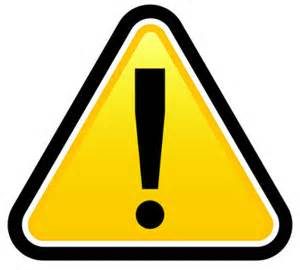 The job of compiling these lists would be easier if I scored wines since I could simply list the ten wines I scored highest during the year. However, given my well-known abhorrence for the practice of scoring wines (to the constant chagrin and complaint of many wineries and retailers), the task is significantly more complicated and thus, especially with my day job as a transactional corporate attorney, the following detailed caveats are required:
The job of compiling these lists would be easier if I scored wines since I could simply list the ten wines I scored highest during the year. However, given my well-known abhorrence for the practice of scoring wines (to the constant chagrin and complaint of many wineries and retailers), the task is significantly more complicated and thus, especially with my day job as a transactional corporate attorney, the following detailed caveats are required: Capcanes, Peraj Ha’Abib, Flor de Primavera, Montsant, 2015: As noted above, Capcanes is one of those wines that make a play for this list every year, usually getting its way and 2015 was no exception. As always, a blend of the winery’s three varietals – Cabernet Sauvignon, Grenache and Carignan (the latter two also bottled as individual varietals in the La Flor series), with this years blend around 55% Grenache, 30% Carignan and approximately 25% Cabernet Sauvignon. With even more Grenache than the 2014’s already increased percentage, Jürgen’s love of the floral elegance and supple finesse the varietal brings to the blend is obvious. Deep, rich and extracted on both the nose and full bodied palate with loads of rich black fruit, tar, floral notes, lavender, dark chocolate, fresh-cracked black pepper and roasted game along with lovely bitter herbal notes on a bed of gripping yet supple tannins and great acidity that keeps things vibrant. Layers of aromas reveal themselves slowly and lead into a mouth-filling and lingering finish. A rich and powerful wines that is still coming into its own, and the high-quality grape and masterful winemaking ensure that the 15% AbV doesn’t get in the way. Give this one until mid-2019 before opening and then enjoy through 2030, maybe longer.
Capcanes, Peraj Ha’Abib, Flor de Primavera, Montsant, 2015: As noted above, Capcanes is one of those wines that make a play for this list every year, usually getting its way and 2015 was no exception. As always, a blend of the winery’s three varietals – Cabernet Sauvignon, Grenache and Carignan (the latter two also bottled as individual varietals in the La Flor series), with this years blend around 55% Grenache, 30% Carignan and approximately 25% Cabernet Sauvignon. With even more Grenache than the 2014’s already increased percentage, Jürgen’s love of the floral elegance and supple finesse the varietal brings to the blend is obvious. Deep, rich and extracted on both the nose and full bodied palate with loads of rich black fruit, tar, floral notes, lavender, dark chocolate, fresh-cracked black pepper and roasted game along with lovely bitter herbal notes on a bed of gripping yet supple tannins and great acidity that keeps things vibrant. Layers of aromas reveal themselves slowly and lead into a mouth-filling and lingering finish. A rich and powerful wines that is still coming into its own, and the high-quality grape and masterful winemaking ensure that the 15% AbV doesn’t get in the way. Give this one until mid-2019 before opening and then enjoy through 2030, maybe longer.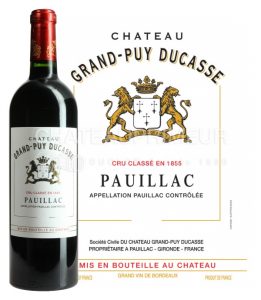 Château Grand-Puy Ducasse, Pauillac, 2015: Another great French offering from the supremely approachable 2015 vintage year. While “only” a Fifth Growth, it’s important to realize the ranking was based on futures pricing in 1855 and many great wines come from low (or un-)ranked tiers (the incredible Pontet-Canet is also a Fifth Growth) and it represents one of the highest available kosher offerings from the well-regarded Pauillac region (home to three of the five first Growth châteaux). One of the wineries whose châteaux isn’t located within he vineyards, Grand-Puy Ducasse has vineyards spread throughout many prestigious areas of Pauillac and sources grapes from all of them to create the wine which typically spends 18 months in approximately 50% new French oak, with this wine clocking in at 14% AbV. Despite being planted with 62% Cabernet Sauvignon and 38% Merlot this wine is primarily Cabernet Sauvignon with only a bit of Merlot mixed in. Like many of its 2015 brethren, the wine opens with an expressive and voluptuous nose of rich and ripe black cassis, crushed blackberry, plums and dark cherries with rich dark chocolate, nuanced herbal notes and earthy minerals providing lovely complexity along with cigar-box wood and freshly sharpened pencil. The full-bodied palate is highly extracted, rich and deep and needs plenty of time to settle down before it will be ready for prime time and culminates in a finish that lingers nearly forever. With powerful tannins providing great backbone for the rich fruit and plenty of lovely acidity in balance with the oak and tannins, this is a beautiful and elegant wine for the ages that will be enjoyable for many stops along the way as well. Drink 2025-2035.
Château Grand-Puy Ducasse, Pauillac, 2015: Another great French offering from the supremely approachable 2015 vintage year. While “only” a Fifth Growth, it’s important to realize the ranking was based on futures pricing in 1855 and many great wines come from low (or un-)ranked tiers (the incredible Pontet-Canet is also a Fifth Growth) and it represents one of the highest available kosher offerings from the well-regarded Pauillac region (home to three of the five first Growth châteaux). One of the wineries whose châteaux isn’t located within he vineyards, Grand-Puy Ducasse has vineyards spread throughout many prestigious areas of Pauillac and sources grapes from all of them to create the wine which typically spends 18 months in approximately 50% new French oak, with this wine clocking in at 14% AbV. Despite being planted with 62% Cabernet Sauvignon and 38% Merlot this wine is primarily Cabernet Sauvignon with only a bit of Merlot mixed in. Like many of its 2015 brethren, the wine opens with an expressive and voluptuous nose of rich and ripe black cassis, crushed blackberry, plums and dark cherries with rich dark chocolate, nuanced herbal notes and earthy minerals providing lovely complexity along with cigar-box wood and freshly sharpened pencil. The full-bodied palate is highly extracted, rich and deep and needs plenty of time to settle down before it will be ready for prime time and culminates in a finish that lingers nearly forever. With powerful tannins providing great backbone for the rich fruit and plenty of lovely acidity in balance with the oak and tannins, this is a beautiful and elegant wine for the ages that will be enjoyable for many stops along the way as well. Drink 2025-2035. Château La Tour Blanche, Sauternes, 2014: Different from the red wines of Bordeaux and attributable to the exalted status of Château d’Yquem, the ranking of white wines (which includes the dessert wines of Sauternes) included an extra-special tier about First Growth – that of a Superior First growth, the sole beneficiary of which was d’Yquem. However, due to this anomaly, the kosher wine world benefited from First Growth Bordeaux after all. Initially this title was held only by Château Guiraud (which produced kosher cuvées for 1999, 2000 and 2001) but was joined by three new options for the 2014 vintage (with more on the way), the best of which is this wine (all three were reviewed in my Rosh Hashanah newsletter earlier this year) resulting in an extremely gorgeous and elegant Sauternes. Different from most of the vineyards in France, Château La Tour Blanche is owned by the state and also includes a school of oenology and viticulture onsite. At 5%, its vineyards contain one of the highest concentrations of Muscadelle in all of Bordeaux. The wine is comprised of 80% Sémillon that spent 16-18 months in 35% new French oak along with 15% Sauvignon Blanc and 5% Muscadelle which spent the same amount of time in stainless steel before being blended on the bottling line. Loads of dried tropical fruit, ripe green fig, sweet heather, crème brûlée, honeycomb and luscious notes of lemon cream are enhanced by notes of orange blossom, ginger and honeysuckle on a lovely and tantalizing nose. Great balancing acidity keeps the wine vibrant and fresh and bodes exceptionally well for its longevity with more of the same on the unctuous and luscious palate joined by crystallized ginger root, caramelized hazelnuts, cream, peaches and characteristic botrytis funkiness, culminating in a long and lingering spice-tinged finish. While the wine can provide enjoyment at this stage it would literally be a crime not to give it the time it needs and deserves. Hold at least until 2020 then enjoy through 2040, maybe longer
Château La Tour Blanche, Sauternes, 2014: Different from the red wines of Bordeaux and attributable to the exalted status of Château d’Yquem, the ranking of white wines (which includes the dessert wines of Sauternes) included an extra-special tier about First Growth – that of a Superior First growth, the sole beneficiary of which was d’Yquem. However, due to this anomaly, the kosher wine world benefited from First Growth Bordeaux after all. Initially this title was held only by Château Guiraud (which produced kosher cuvées for 1999, 2000 and 2001) but was joined by three new options for the 2014 vintage (with more on the way), the best of which is this wine (all three were reviewed in my Rosh Hashanah newsletter earlier this year) resulting in an extremely gorgeous and elegant Sauternes. Different from most of the vineyards in France, Château La Tour Blanche is owned by the state and also includes a school of oenology and viticulture onsite. At 5%, its vineyards contain one of the highest concentrations of Muscadelle in all of Bordeaux. The wine is comprised of 80% Sémillon that spent 16-18 months in 35% new French oak along with 15% Sauvignon Blanc and 5% Muscadelle which spent the same amount of time in stainless steel before being blended on the bottling line. Loads of dried tropical fruit, ripe green fig, sweet heather, crème brûlée, honeycomb and luscious notes of lemon cream are enhanced by notes of orange blossom, ginger and honeysuckle on a lovely and tantalizing nose. Great balancing acidity keeps the wine vibrant and fresh and bodes exceptionally well for its longevity with more of the same on the unctuous and luscious palate joined by crystallized ginger root, caramelized hazelnuts, cream, peaches and characteristic botrytis funkiness, culminating in a long and lingering spice-tinged finish. While the wine can provide enjoyment at this stage it would literally be a crime not to give it the time it needs and deserves. Hold at least until 2020 then enjoy through 2040, maybe longer Château Lascombes, Margaux, 2015: One of the many new French arrivals coming to your local kosher wine retailer in a few months. As will be discussed in depth in my summarizing newsletters, kosher French wine is making a huge comeback with many new top tier options on the market for vintages 2014 – 2016. With 2015 a particularly approachable vintage yielding more than its fair share of floozies, it will be easy for increasingly sophisticated consumers to get behind this new slate of French wines with Château Lascombes best-suited for this given its position as the most New-World of all Margaux châteaux. While 2015 hasn’t yielded a kosher First Growth wine yet, Lascombes joins the growing list of
Château Lascombes, Margaux, 2015: One of the many new French arrivals coming to your local kosher wine retailer in a few months. As will be discussed in depth in my summarizing newsletters, kosher French wine is making a huge comeback with many new top tier options on the market for vintages 2014 – 2016. With 2015 a particularly approachable vintage yielding more than its fair share of floozies, it will be easy for increasingly sophisticated consumers to get behind this new slate of French wines with Château Lascombes best-suited for this given its position as the most New-World of all Margaux châteaux. While 2015 hasn’t yielded a kosher First Growth wine yet, Lascombes joins the growing list of  Château Smith-Haut-Lafitte, Pessac Léognan, 2014: Different from many Bordeaux estates, Smith Haut Laffite produced both red and white wines (with approximately 86% devoted to red wine production). While there was only one kosher cuvée ever produced of the white wine (for the vintage year 2004), the château d has released a kosher red cuvée for the 1995, 2000, 2000, 2009 and 2014 vintages. Following on the voluptuous and approachable 2009 vintage of this wine which has achieved near cult-status in the kosher wine world, the 2014 returns to the Old World style the winery is known for. The highly extracted nose is loaded with rich notes of mostly black fruit, cigars, anise, lack olives, saline minerals and pungent forest floor with nuances of smoky oak, roasted meat and Oriental spices. The full-bodied palate has caressing tannins that need plenty of time to integrate but hold great promise of long-lived harmony and balance with much of the nose present long with caramelized almonds, roasted coffee, more black olives, a touch of herbacousness and layers of complexity that take hours to reveal themselves culminating in a long-lingering finish. Drink 2025-2040.
Château Smith-Haut-Lafitte, Pessac Léognan, 2014: Different from many Bordeaux estates, Smith Haut Laffite produced both red and white wines (with approximately 86% devoted to red wine production). While there was only one kosher cuvée ever produced of the white wine (for the vintage year 2004), the château d has released a kosher red cuvée for the 1995, 2000, 2000, 2009 and 2014 vintages. Following on the voluptuous and approachable 2009 vintage of this wine which has achieved near cult-status in the kosher wine world, the 2014 returns to the Old World style the winery is known for. The highly extracted nose is loaded with rich notes of mostly black fruit, cigars, anise, lack olives, saline minerals and pungent forest floor with nuances of smoky oak, roasted meat and Oriental spices. The full-bodied palate has caressing tannins that need plenty of time to integrate but hold great promise of long-lived harmony and balance with much of the nose present long with caramelized almonds, roasted coffee, more black olives, a touch of herbacousness and layers of complexity that take hours to reveal themselves culminating in a long-lingering finish. Drink 2025-2040. Flam, Noble, 2013: Since the first kosher release for the 2010 vintage year, this wine has been a perennial participant in this annual list. Given its indented personification of Golan flam’s winemaking expression, the success shouldn’t come as any sort of surprise. With the winery’s entire portfolio typifying restraint and elegance, Flam’s flagship offering showcases the best they can do and certainly lives up to being “the prime of the premium” – an apt descriptor coined by Israel Flam. It is interesting to note that while many Israeli winemakers are shying away from the Bordeaux varietals in a search for grapes more suited to the hotter Mediterranean climate, three of Israel’s top wineries (Castel, Tzora and Flam) continue to make restrained and elegant top tier wines from these varietals. A blend of 67% Cabernet Sauvignon, 18% Merlot, 9% Syrah and 6% Petit Verdot, the various components were vinified separately and spent 18 months in 85% new French oak before being blended and returned to the barrels for another six months. Keeping with the wine’s tradition, it was then bottle-aged for an additional two years in the winery’s cellar before being released. Despite being a “Judean Hills Winery”, Flam continues to source a portion of its grapes for this wine from its better Upper Galilee vineyards located in Kayoumi and Dishon (along with their Judean Hills Mata vineyard) and Golan feels this is the best Noble yet. With their 2014 Reserve Merlot being among the best of the bunch, I was happy to see the increased percentage of Merlot in the wine, giving it more power than the 2012 while retaining the characteristic elegance and complexity. The wine opens with a rich nose of near-sweet red crushed fruit tinged with warm spices, nuanced toasty oak and hints of dark chocolate, cedar wood and a light overlay of roasted herbs. The medium to full bodied palate is elegant and refined with nicely integrating tannins providing ample backbone for the deep fruit and layered complexity with a pleasing bitterness that rises and plays out through the supple and lingering finish is tinged with rich dark chocolate and Oriental spices with a whiff of herbaceousness that pleases. Truly a beautiful wine and I’d agree with Golan that it’s his best effort to date. Drink 2020-2028.
Flam, Noble, 2013: Since the first kosher release for the 2010 vintage year, this wine has been a perennial participant in this annual list. Given its indented personification of Golan flam’s winemaking expression, the success shouldn’t come as any sort of surprise. With the winery’s entire portfolio typifying restraint and elegance, Flam’s flagship offering showcases the best they can do and certainly lives up to being “the prime of the premium” – an apt descriptor coined by Israel Flam. It is interesting to note that while many Israeli winemakers are shying away from the Bordeaux varietals in a search for grapes more suited to the hotter Mediterranean climate, three of Israel’s top wineries (Castel, Tzora and Flam) continue to make restrained and elegant top tier wines from these varietals. A blend of 67% Cabernet Sauvignon, 18% Merlot, 9% Syrah and 6% Petit Verdot, the various components were vinified separately and spent 18 months in 85% new French oak before being blended and returned to the barrels for another six months. Keeping with the wine’s tradition, it was then bottle-aged for an additional two years in the winery’s cellar before being released. Despite being a “Judean Hills Winery”, Flam continues to source a portion of its grapes for this wine from its better Upper Galilee vineyards located in Kayoumi and Dishon (along with their Judean Hills Mata vineyard) and Golan feels this is the best Noble yet. With their 2014 Reserve Merlot being among the best of the bunch, I was happy to see the increased percentage of Merlot in the wine, giving it more power than the 2012 while retaining the characteristic elegance and complexity. The wine opens with a rich nose of near-sweet red crushed fruit tinged with warm spices, nuanced toasty oak and hints of dark chocolate, cedar wood and a light overlay of roasted herbs. The medium to full bodied palate is elegant and refined with nicely integrating tannins providing ample backbone for the deep fruit and layered complexity with a pleasing bitterness that rises and plays out through the supple and lingering finish is tinged with rich dark chocolate and Oriental spices with a whiff of herbaceousness that pleases. Truly a beautiful wine and I’d agree with Golan that it’s his best effort to date. Drink 2020-2028. Herzog, Special Reserve, Cabernet Sauvignon, Clone Six, 2014: As evidenced by another California Cabernet Sauvignon on this list, 2014 was truly a special year in California for the varietal and this year’s Clone Six is truly delightful. Sourced from the acclaimed Chalk Hill region of Sonoma, the wine spent 18 months in new French oak an is superbly balanced with great acidity backing up the rich, extracted and near-sweet fruit. Rich, deep and brooding, the wine is very approachable with lovely extracted red and black crushed forest fruits, spicy oak, tart raspberries, rich cassis, black currents, potent notes of black pepper and pencil shavings along with nuances of fresh-paved asphalt, roasted meat, anise and a whiff of smoky oak. A lingering finish is redolent of more rich red fruit, warm spices and dark chocolate. Truly a magnificent wine and one of the best Herzog offerings so load up if you can and please, give the wine the cellaring time it deserves that will enable you to enjoy all that was intended by its creator. Drink 2019 – 2026
Herzog, Special Reserve, Cabernet Sauvignon, Clone Six, 2014: As evidenced by another California Cabernet Sauvignon on this list, 2014 was truly a special year in California for the varietal and this year’s Clone Six is truly delightful. Sourced from the acclaimed Chalk Hill region of Sonoma, the wine spent 18 months in new French oak an is superbly balanced with great acidity backing up the rich, extracted and near-sweet fruit. Rich, deep and brooding, the wine is very approachable with lovely extracted red and black crushed forest fruits, spicy oak, tart raspberries, rich cassis, black currents, potent notes of black pepper and pencil shavings along with nuances of fresh-paved asphalt, roasted meat, anise and a whiff of smoky oak. A lingering finish is redolent of more rich red fruit, warm spices and dark chocolate. Truly a magnificent wine and one of the best Herzog offerings so load up if you can and please, give the wine the cellaring time it deserves that will enable you to enjoy all that was intended by its creator. Drink 2019 – 2026 Tzora, Misty Hills, 2015: Another wine that earns its way onto this list with relative ease. Given the winery’s history of careful excellence, one shouldn’t be surprised that nearly every vintage at Tzora shows improvement over the prior, regardless of the quality of the particular vintage in question. Eran Pick’s meticulous nature combined with a certain level of humility that enables him to continue learning from the terroir and improving on his incredible creation are likely partially responsible for the continuous uptick in quality (in addition to the consulting advice from Chateau Petrus’ retired winemaker – Jean-Claude Berrouet), but regardless of their genesis I can only say thank you. Taking its name from the early morning fog that is often blanketing the “Fossil Vineyard’ from which the grapes are sourced (and only the best plots from the vineyard are utilized for the flagship wine), this year’s blend is comprised of 66% Cabernet Sauvignon and 34% Syrah (see my note for the noble above with respect to the continued use of Bordeaux varietals by these wineries) which spent two years in French oak. The dust storm of 2015 wreaked havoc on most Israeli wineries and Eran’s decision to harvest a little earlier has paid dividends in the form on a more austere wine than ever before (including from the colder than usual vintage of 2011) with subtlety and restraint being the hallmark of this Über professionally-made wine. Give the wine a little air and you will be rewarded with a rich nose of mostly red fruit with some dark black fruit nuances providing pleasing complexity alongside floral notes and typical roasted herbs with black pepper, earthy minerals and a whiff of minty chocolate completing the picture. The palate is medium to full bodied and surprisingly approachable with elegant tannins nicely integrated and showcasing good acidity alongside the pungent forest floor, tart red fruit, hint of slightly toasted oak and rich chocolate. A long chocolate and herbal-laced finish is supple and with a pleasing bitterness on the finish. Drink 2019 – 2025 [Shmittah].
Tzora, Misty Hills, 2015: Another wine that earns its way onto this list with relative ease. Given the winery’s history of careful excellence, one shouldn’t be surprised that nearly every vintage at Tzora shows improvement over the prior, regardless of the quality of the particular vintage in question. Eran Pick’s meticulous nature combined with a certain level of humility that enables him to continue learning from the terroir and improving on his incredible creation are likely partially responsible for the continuous uptick in quality (in addition to the consulting advice from Chateau Petrus’ retired winemaker – Jean-Claude Berrouet), but regardless of their genesis I can only say thank you. Taking its name from the early morning fog that is often blanketing the “Fossil Vineyard’ from which the grapes are sourced (and only the best plots from the vineyard are utilized for the flagship wine), this year’s blend is comprised of 66% Cabernet Sauvignon and 34% Syrah (see my note for the noble above with respect to the continued use of Bordeaux varietals by these wineries) which spent two years in French oak. The dust storm of 2015 wreaked havoc on most Israeli wineries and Eran’s decision to harvest a little earlier has paid dividends in the form on a more austere wine than ever before (including from the colder than usual vintage of 2011) with subtlety and restraint being the hallmark of this Über professionally-made wine. Give the wine a little air and you will be rewarded with a rich nose of mostly red fruit with some dark black fruit nuances providing pleasing complexity alongside floral notes and typical roasted herbs with black pepper, earthy minerals and a whiff of minty chocolate completing the picture. The palate is medium to full bodied and surprisingly approachable with elegant tannins nicely integrated and showcasing good acidity alongside the pungent forest floor, tart red fruit, hint of slightly toasted oak and rich chocolate. A long chocolate and herbal-laced finish is supple and with a pleasing bitterness on the finish. Drink 2019 – 2025 [Shmittah]. Yatir, Forest, 2013: The winery’s flagship blend continues to be well-deserving of its position in the portfolio and was recently selected (along with Flam’s 2013 Noble reviewed above) by Jancis Robinson as one of her favorites from a recent tasting in Israel of local wines. This year’s blend is comprised of 68% Cabernet Sauvignon and 32% Petit Verdot harvested from the winery’s dessert vineyards located upwards of 900 meters high. The high percentage of Petit Verdot is helpful in maintaining the wine’s characteristic profile of an iron first in a velvet glove. A subtle but extracted nose of primarily dark fruits with sun-warmed sage and rosemary providing nuanced complexity to the toasty oak, cigar-box tobacco and warm cedar. Nice black pepper, mocha and hints of red fruit add to the layers that slowly reveal themselves over time on the elegant yet powerfully built full-bodied palate. Gripping tannins are still integrating and will continue to provide a solid structure on which the rich and controlled fruit will express itself for years to come as the wine presents in great harmony and with the elegant balance we have come to expect from Yatir’s Eran Goldwasser. A luscious finish lingers long. Drink 2019-2027.
Yatir, Forest, 2013: The winery’s flagship blend continues to be well-deserving of its position in the portfolio and was recently selected (along with Flam’s 2013 Noble reviewed above) by Jancis Robinson as one of her favorites from a recent tasting in Israel of local wines. This year’s blend is comprised of 68% Cabernet Sauvignon and 32% Petit Verdot harvested from the winery’s dessert vineyards located upwards of 900 meters high. The high percentage of Petit Verdot is helpful in maintaining the wine’s characteristic profile of an iron first in a velvet glove. A subtle but extracted nose of primarily dark fruits with sun-warmed sage and rosemary providing nuanced complexity to the toasty oak, cigar-box tobacco and warm cedar. Nice black pepper, mocha and hints of red fruit add to the layers that slowly reveal themselves over time on the elegant yet powerfully built full-bodied palate. Gripping tannins are still integrating and will continue to provide a solid structure on which the rich and controlled fruit will express itself for years to come as the wine presents in great harmony and with the elegant balance we have come to expect from Yatir’s Eran Goldwasser. A luscious finish lingers long. Drink 2019-2027.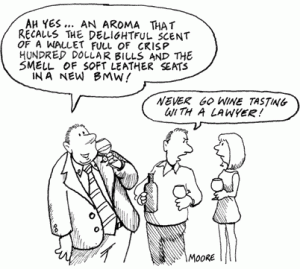
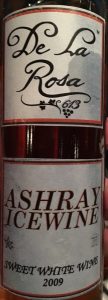 De La Rosa, 613, Ashray Ice Wine, 2009: I first encountered this label at KosherFest a few years ago where the few wines on offering were insufficient to garner my interest. I was therefore happy to discover two Austrian Icewines at a tasting earlier in the year with this one being truly delightful. De La Rosa Real Foods & Vineyards, is a family-owned business hailing from Austria who have been producing wines for nearly 800 years and named the company for the 18th century Sephardic kabbalist Rabbi Chaim De La Rosa of Salonika (since natural healing was a focus for him).
De La Rosa, 613, Ashray Ice Wine, 2009: I first encountered this label at KosherFest a few years ago where the few wines on offering were insufficient to garner my interest. I was therefore happy to discover two Austrian Icewines at a tasting earlier in the year with this one being truly delightful. De La Rosa Real Foods & Vineyards, is a family-owned business hailing from Austria who have been producing wines for nearly 800 years and named the company for the 18th century Sephardic kabbalist Rabbi Chaim De La Rosa of Salonika (since natural healing was a focus for him). Jezreel Valley, Dabuki, Pét-Nat, 2016: To my knowledge, Jezreel currently makes the only kosher version of this genre and this was the first time I had ever tasted the genre for myself. In addition to the novelty of the ancient grape coupled with ancient winemaking techniques, I enjoyed the wine as well, especially after it had some air and much of the cabbage-like funkiness blew off. Even so, there was plenty of funk on the nose reminiscent of ripe cheese, wet earth, rain-slicked flint, minerals and some grassy notes. Decent mousse and sufficient acid kept the wine alive while it aired out and sat in the glass over the course of the hour it was tasted where subtle green apple and slightly-sweet notes of melon developed. The funky notes were actually enjoyable (it smells like winemaking) and it was a fun experience with a low 11.5% AbV. While not a wine I’d drink regularly, it was certainly an interesting and pleasing experience that I’d recommend to any interested oenophile and the winery is currently anticipating releasing two different Pet-Nat wines for the 2017 vintage, some of which will hopefully make its way to the United States [Only in Israel].
Jezreel Valley, Dabuki, Pét-Nat, 2016: To my knowledge, Jezreel currently makes the only kosher version of this genre and this was the first time I had ever tasted the genre for myself. In addition to the novelty of the ancient grape coupled with ancient winemaking techniques, I enjoyed the wine as well, especially after it had some air and much of the cabbage-like funkiness blew off. Even so, there was plenty of funk on the nose reminiscent of ripe cheese, wet earth, rain-slicked flint, minerals and some grassy notes. Decent mousse and sufficient acid kept the wine alive while it aired out and sat in the glass over the course of the hour it was tasted where subtle green apple and slightly-sweet notes of melon developed. The funky notes were actually enjoyable (it smells like winemaking) and it was a fun experience with a low 11.5% AbV. While not a wine I’d drink regularly, it was certainly an interesting and pleasing experience that I’d recommend to any interested oenophile and the winery is currently anticipating releasing two different Pet-Nat wines for the 2017 vintage, some of which will hopefully make its way to the United States [Only in Israel]. Nik Weis, St. Urbans-Hof,
Nik Weis, St. Urbans-Hof,  Recanati, Single Vineyard, Ancient Grapes, Bittuni, 2016: The name likely originated from the grape’s origin (one of two villages located near Chevron or Ramallah), the hardy grape is known to produce copious yields and with high levels of sugar, is one of the Arab world’s primary sources for raisins (I think we can all agree that the lovely wine is a better use for the grape). 50% of the wine was whole-cluster fermented, following which it spent approximately six months aging in one year old French oak barrels. A lovely and lithe wine, it comes packed with bright fresh near-sweet notes of red fruit including cherries and plums, violets, light warm spices, soft tannins and great acidity. Light to medium bodied, the wine is slightly reminiscent of Gamay (from which Beaujolais is made). A perfect accompaniment to late evening summer meals (or anytime else) with the characteristically low alcohol (12% AbV) found is most of these revitalized ancient grapes. Drink 2018-2020. The third vintage (2016) of Recanati’s Marawi is worth mentioning as quality improves on an annual basis for this indigenous grape.
Recanati, Single Vineyard, Ancient Grapes, Bittuni, 2016: The name likely originated from the grape’s origin (one of two villages located near Chevron or Ramallah), the hardy grape is known to produce copious yields and with high levels of sugar, is one of the Arab world’s primary sources for raisins (I think we can all agree that the lovely wine is a better use for the grape). 50% of the wine was whole-cluster fermented, following which it spent approximately six months aging in one year old French oak barrels. A lovely and lithe wine, it comes packed with bright fresh near-sweet notes of red fruit including cherries and plums, violets, light warm spices, soft tannins and great acidity. Light to medium bodied, the wine is slightly reminiscent of Gamay (from which Beaujolais is made). A perfect accompaniment to late evening summer meals (or anytime else) with the characteristically low alcohol (12% AbV) found is most of these revitalized ancient grapes. Drink 2018-2020. The third vintage (2016) of Recanati’s Marawi is worth mentioning as quality improves on an annual basis for this indigenous grape. Vitkin, Collector’s Edition, Grenache Blanc, 2016: With so few kosher options for Grenache Blanc, I was happy to add to my tasting repertoire a wine that is delicious in its own right. Available only at the winery, this is another wine worth seeking out. Sourced from vineyards located at an altitude of 700 meters above see level and blended with 10% Roussanne to give it a little extra backbone while still having it represent the “fattier” aspect of his portfolio – decadent and luxurious. 50% of the wine spent approximately five months in 50% new French oak to further buttress those characteristics. With lovely bitter notes of flinty minerals providing some excitement on the palate along with lip-smacking citrus, ripe peach, lovely spices and tart/slightly under-ripe stone fruit, the wine has plenty of acidity and lip-smacking citrus notes all the way through the lingering finish and is well-worth the added effort to source a few bottles. Drink 2018-2020 [Only at the Winery]
Vitkin, Collector’s Edition, Grenache Blanc, 2016: With so few kosher options for Grenache Blanc, I was happy to add to my tasting repertoire a wine that is delicious in its own right. Available only at the winery, this is another wine worth seeking out. Sourced from vineyards located at an altitude of 700 meters above see level and blended with 10% Roussanne to give it a little extra backbone while still having it represent the “fattier” aspect of his portfolio – decadent and luxurious. 50% of the wine spent approximately five months in 50% new French oak to further buttress those characteristics. With lovely bitter notes of flinty minerals providing some excitement on the palate along with lip-smacking citrus, ripe peach, lovely spices and tart/slightly under-ripe stone fruit, the wine has plenty of acidity and lip-smacking citrus notes all the way through the lingering finish and is well-worth the added effort to source a few bottles. Drink 2018-2020 [Only at the Winery]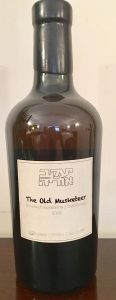 Yaacov Oryah, Old Musketeer, 2008: with a day job making clean and well-crafted wines for Psagot, Yaacov Oryah expresses his well-deserved reputation of unconventionality in the growing portfolio of wines bottled under his
Yaacov Oryah, Old Musketeer, 2008: with a day job making clean and well-crafted wines for Psagot, Yaacov Oryah expresses his well-deserved reputation of unconventionality in the growing portfolio of wines bottled under his 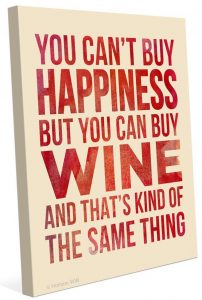
 The easiest way to guarantee success in this regard is to choose one of my recommended wines and never, under any circumstance, buy the bottle that shall not be named. Even if your hosts enjoy this particular beverage, your paternalism is important to save them from themselves. However, as we are talking about gifting oenophiles, the best bottle will be something different that they may not yet have tired, either because they aren’t easily available or the sticker price makes it unlikely they will indulge on their own. Large format bottles make nice gifts as well – impressive looking, stately and very practical for larger meals, they can also be a lively conversation piece (the reduced wine-to-air ratio also increases the wine’s potential longevity). For special occasions, gifting a bottle from a vintage year special to them can make for an especially memorable gift (becoming far more feasible as the kosher wine world provides
The easiest way to guarantee success in this regard is to choose one of my recommended wines and never, under any circumstance, buy the bottle that shall not be named. Even if your hosts enjoy this particular beverage, your paternalism is important to save them from themselves. However, as we are talking about gifting oenophiles, the best bottle will be something different that they may not yet have tired, either because they aren’t easily available or the sticker price makes it unlikely they will indulge on their own. Large format bottles make nice gifts as well – impressive looking, stately and very practical for larger meals, they can also be a lively conversation piece (the reduced wine-to-air ratio also increases the wine’s potential longevity). For special occasions, gifting a bottle from a vintage year special to them can make for an especially memorable gift (becoming far more feasible as the kosher wine world provides 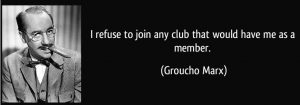 If you are looking to provide more of an experience or longer-lasting gift, a wine club membership can be a terrific present. The Leket Wine Club is unfortunately a thing of the past, but there are many kosher wine clubs out there. Membership in a wine club is one of the best ways to introduce the recipient to new and interesting wines while ensuring they are also drinking on a regular basis. Selecting the right wine club can be tricky as some proprietors take advantage of the regular cash-flow to offload less desirable wines on participants.
If you are looking to provide more of an experience or longer-lasting gift, a wine club membership can be a terrific present. The Leket Wine Club is unfortunately a thing of the past, but there are many kosher wine clubs out there. Membership in a wine club is one of the best ways to introduce the recipient to new and interesting wines while ensuring they are also drinking on a regular basis. Selecting the right wine club can be tricky as some proprietors take advantage of the regular cash-flow to offload less desirable wines on participants. If you prefer not to bring wine, high-end wine accoutrements can be a most welcome addition to any oenophile’s home. While hitting it out of the park can be more difficult when dealing with the hi-tech and sometime-gimmicky gadgets discussed further on, most wine-lovers will never have enough top quality basic items like glassware, decanters and corkscrews and a carefully chosen one can really enhance your host’s wine-drinking experience.
If you prefer not to bring wine, high-end wine accoutrements can be a most welcome addition to any oenophile’s home. While hitting it out of the park can be more difficult when dealing with the hi-tech and sometime-gimmicky gadgets discussed further on, most wine-lovers will never have enough top quality basic items like glassware, decanters and corkscrews and a carefully chosen one can really enhance your host’s wine-drinking experience. Despite the abundance of fancy corkscrews and the popularity of the well-known Rabbit, the best corkscrew is the simplest one, known as a waiter’s corkscrew. Easy to use, it never malfunctions and remains one of the most efficient pieces of hardware ever invented. My personal favorite is made by Le Creuset and is available for
Despite the abundance of fancy corkscrews and the popularity of the well-known Rabbit, the best corkscrew is the simplest one, known as a waiter’s corkscrew. Easy to use, it never malfunctions and remains one of the most efficient pieces of hardware ever invented. My personal favorite is made by Le Creuset and is available for 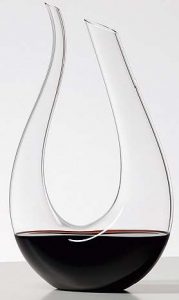 Our constant need for instant gratification provides another great gifting opportunity – decanters. When opening a bottle before it has reached peak perfection, a few hours in a decanter can do wonders for the wine’s development and many are stunning pieces of art that would enhance any home. Riedel really shines in this area, with some truly
Our constant need for instant gratification provides another great gifting opportunity – decanters. When opening a bottle before it has reached peak perfection, a few hours in a decanter can do wonders for the wine’s development and many are stunning pieces of art that would enhance any home. Riedel really shines in this area, with some truly  An even greater invention than sliced bread, the Coravin has changed the way wine is consumed in a pretty dramatic way. Applying his physics, engineering and nuclear power knowledge and medical device practical experience to the far greater good of wine drinking, Greg Lambrecht invented a device that allows you a sip or glass of wine without opening the bottle or harming the integrity of the bottle’s preservation ability. This is done by inserting a long needle through the cork and as wine flows out the vacuum is immediately filled by argon – an inert gas. Highly recommended for anyone with nice bottles who doesn’t want to be forced to consume the entire bottle in one sitting. Available directly from
An even greater invention than sliced bread, the Coravin has changed the way wine is consumed in a pretty dramatic way. Applying his physics, engineering and nuclear power knowledge and medical device practical experience to the far greater good of wine drinking, Greg Lambrecht invented a device that allows you a sip or glass of wine without opening the bottle or harming the integrity of the bottle’s preservation ability. This is done by inserting a long needle through the cork and as wine flows out the vacuum is immediately filled by argon – an inert gas. Highly recommended for anyone with nice bottles who doesn’t want to be forced to consume the entire bottle in one sitting. Available directly from 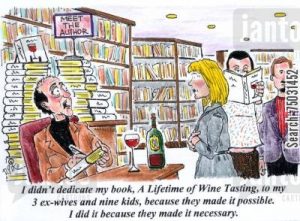
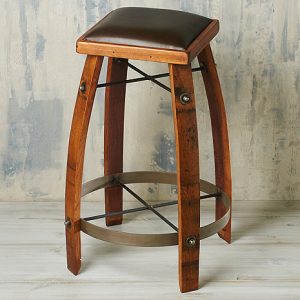 For the truly obsessed who prefer to cover their home with as much wine-related objects as possible, the Wine Enthusiast has a
For the truly obsessed who prefer to cover their home with as much wine-related objects as possible, the Wine Enthusiast has a 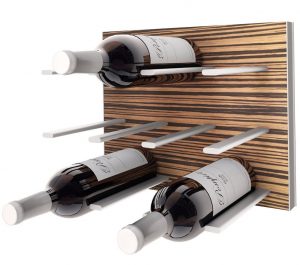 including from
including from  For any true oenophile regardless of their other passions, a trip abroad will mean scouring wine shops for wines not available back home. Bubble wrap and t-shirts can usually do the trip but why not send your precious cargo home
For any true oenophile regardless of their other passions, a trip abroad will mean scouring wine shops for wines not available back home. Bubble wrap and t-shirts can usually do the trip but why not send your precious cargo home 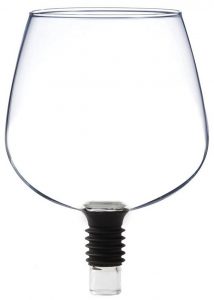 those truly in need of wine and a variation on the
those truly in need of wine and a variation on the 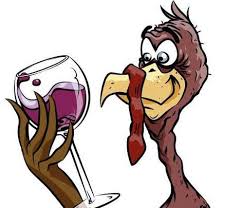
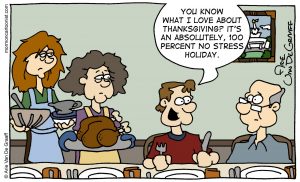 Different from most chagim (other than perhaps Chanukah), the traditional Thanksgiving repast tends to forewarn increased stress levels. While the primary cause of the elevated cortisol levels is usually a specific guest or relative, coming up with proper wine pairings is a common cause as well. In addition to preparing a fowl with which most of us are relatively unfamiliar, a traditional Thanksgiving repast includes a mélange of dishes, with a focus on the turkey and traditionally fall-orientated trimming. While the array of options provides your guests with sufficient choices to satisfy all manner of lifestyle choices, the wide-ranging scope of taste, flavor and texture options can throw a serious wrench in commonly used wine and food-pairing concepts, significantly complicating the wine pairing exercise. Exacerbating the difficulty is the diverse range of palate preferences and oenophilic expertise, virtually guaranteed by the eclectic guest list. Unless you are having an intimate meal where all participants are fellow wine lovers, Thanksgiving dinner usually isn’t the best place to showcase meticulous wines pairings.
Different from most chagim (other than perhaps Chanukah), the traditional Thanksgiving repast tends to forewarn increased stress levels. While the primary cause of the elevated cortisol levels is usually a specific guest or relative, coming up with proper wine pairings is a common cause as well. In addition to preparing a fowl with which most of us are relatively unfamiliar, a traditional Thanksgiving repast includes a mélange of dishes, with a focus on the turkey and traditionally fall-orientated trimming. While the array of options provides your guests with sufficient choices to satisfy all manner of lifestyle choices, the wide-ranging scope of taste, flavor and texture options can throw a serious wrench in commonly used wine and food-pairing concepts, significantly complicating the wine pairing exercise. Exacerbating the difficulty is the diverse range of palate preferences and oenophilic expertise, virtually guaranteed by the eclectic guest list. Unless you are having an intimate meal where all participants are fellow wine lovers, Thanksgiving dinner usually isn’t the best place to showcase meticulous wines pairings.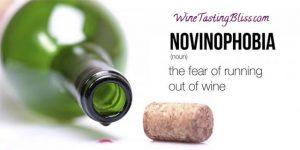 The most important wine rule of any Thanksgiving meal is very simple – don’t run out of wine. I’ve never heard of a family gathering ruined by the Turkey’s chili pepper glaze demolishing the young Bordeaux, but there are few things sadder than empty wine glasses at a festive meal. Having leftover wine is way better that running out mid-meal (half-finished bottles can be sent home with guests as a parting gift or enjoyed during cleanup in your wonderfully quiet, post-meal, home). A wine bottle yields between 4-6 glasses of wine, depending on the pourer’s generosity and I usually recommend buying one bottle per wine-drinking guest. Giving the numerous sweet and savory dishes and diverse range of your guests’ palates and interest in wine, I highly recommend going with a mixed batch of red and white wines, taking into account the considerations listed below. A sparkling wine to start things off works wonders to enhance the festive atmosphere and whet your guest’s appetite for the coming feast, and its
The most important wine rule of any Thanksgiving meal is very simple – don’t run out of wine. I’ve never heard of a family gathering ruined by the Turkey’s chili pepper glaze demolishing the young Bordeaux, but there are few things sadder than empty wine glasses at a festive meal. Having leftover wine is way better that running out mid-meal (half-finished bottles can be sent home with guests as a parting gift or enjoyed during cleanup in your wonderfully quiet, post-meal, home). A wine bottle yields between 4-6 glasses of wine, depending on the pourer’s generosity and I usually recommend buying one bottle per wine-drinking guest. Giving the numerous sweet and savory dishes and diverse range of your guests’ palates and interest in wine, I highly recommend going with a mixed batch of red and white wines, taking into account the considerations listed below. A sparkling wine to start things off works wonders to enhance the festive atmosphere and whet your guest’s appetite for the coming feast, and its  As opposed to your usual robust dish-laden chag meal, for tomorrow’s dinner you are looking for lighter wines – lighter in alcohol, lighter in
As opposed to your usual robust dish-laden chag meal, for tomorrow’s dinner you are looking for lighter wines – lighter in alcohol, lighter in  I’m sure you are all diligently working towards converting all of your friends and family to full-fledged oenophilia and, like me, are experiencing varying levels of success. Regardless, chances are that most participants will be wine challenged to some degree (or worse – self identify as a Blue Bottled Abomination lover).
I’m sure you are all diligently working towards converting all of your friends and family to full-fledged oenophilia and, like me, are experiencing varying levels of success. Regardless, chances are that most participants will be wine challenged to some degree (or worse – self identify as a Blue Bottled Abomination lover).  Especially given its well-known versatility,
Especially given its well-known versatility, 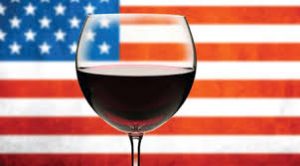 Sticking with red wines, another popular option you hear bandied about this time of year is Zinfandel. Unlike the other wines discussed, Zinfandel’s inclusion is more emotional than practical.
Sticking with red wines, another popular option you hear bandied about this time of year is Zinfandel. Unlike the other wines discussed, Zinfandel’s inclusion is more emotional than practical.  If you are sufficiently enlightened to avoid the “I only drink red wine” trap, your options are much broader and quite frankly, better. The inherent differences between the two types of grape along with the different methods of winemaking, ensure that many more white wines fulfil the criteria above than their more opaque-colored siblings. High acidity, relatively low alcohol, basically non-existent tannins and a more affordable price point are the hallmarks of good white wines.
If you are sufficiently enlightened to avoid the “I only drink red wine” trap, your options are much broader and quite frankly, better. The inherent differences between the two types of grape along with the different methods of winemaking, ensure that many more white wines fulfil the criteria above than their more opaque-colored siblings. High acidity, relatively low alcohol, basically non-existent tannins and a more affordable price point are the hallmarks of good white wines.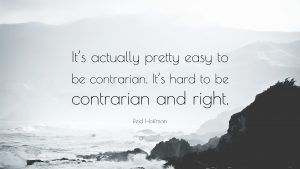 While somewhat non-conforming, Rosé is one of the best pairing options out there. Like Riesling, it hits all the high notes for the meal while also having wider appeal than its Germanic cousin. As you all know, I wholeheartedly
While somewhat non-conforming, Rosé is one of the best pairing options out there. Like Riesling, it hits all the high notes for the meal while also having wider appeal than its Germanic cousin. As you all know, I wholeheartedly  Achron Achron Chaviv
Achron Achron Chaviv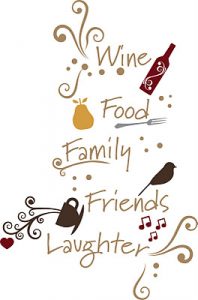 In addition to the various specific recommendations sprinkled throughout the newsletter, I have listed some specific options below that would all do serious justice to your holiday table. As time is fast running out, the list focused on wines that are more likely to be widely available (not all the wines mentioned above fall into that criteria).
In addition to the various specific recommendations sprinkled throughout the newsletter, I have listed some specific options below that would all do serious justice to your holiday table. As time is fast running out, the list focused on wines that are more likely to be widely available (not all the wines mentioned above fall into that criteria). Sparkling
Sparkling
 Any conversation with Shiloh’s winemaker will be dotted with to this historic connection and quotes from the bible and other sources evidencing the ties between the region and the Jewish people, typically seen through the prism of winemaking and the marketing materials all reference this ancient connection. Whether utilizing Jacob’s timeless blessing to Joseph from which the winery’s logo is derived (whose portion of biblical Israel included the land on which the winery sits) including Rashi’s interpretation regarding the superior sweetness inherent in the region’s fruits or the words of the prophet Yechezkel, the deep-rooted and heartfelt connection to the land is obvious to all. The bull in the winery’s logo is derived from that ancient blessing and is supposed to represent the winery’s strength and passion along with its unbreakable connection to the past and commitment to the future.
Any conversation with Shiloh’s winemaker will be dotted with to this historic connection and quotes from the bible and other sources evidencing the ties between the region and the Jewish people, typically seen through the prism of winemaking and the marketing materials all reference this ancient connection. Whether utilizing Jacob’s timeless blessing to Joseph from which the winery’s logo is derived (whose portion of biblical Israel included the land on which the winery sits) including Rashi’s interpretation regarding the superior sweetness inherent in the region’s fruits or the words of the prophet Yechezkel, the deep-rooted and heartfelt connection to the land is obvious to all. The bull in the winery’s logo is derived from that ancient blessing and is supposed to represent the winery’s strength and passion along with its unbreakable connection to the past and commitment to the future.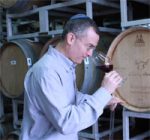 The curious and innovative Amichai Luria is Shiloh’s winemaker and CEO. Born in the US, his family made aliyah when he was four. Fast forward a few years and Amichai is married, living in the Shomron, working as a general building contractor (“kablan”) and, most importantly for us, cultivating a newfound passion in wine. Blessed with immense natural curiosity and a dedication to perfection, Amichai set out to learn as much about wine and the winemaking process as possible, an ongoing educational process whose only official aspect was a practical course in winemaking at Sorek Winery that he took with his wife.
The curious and innovative Amichai Luria is Shiloh’s winemaker and CEO. Born in the US, his family made aliyah when he was four. Fast forward a few years and Amichai is married, living in the Shomron, working as a general building contractor (“kablan”) and, most importantly for us, cultivating a newfound passion in wine. Blessed with immense natural curiosity and a dedication to perfection, Amichai set out to learn as much about wine and the winemaking process as possible, an ongoing educational process whose only official aspect was a practical course in winemaking at Sorek Winery that he took with his wife. His first foray into winemaking as for the 2000 vintage, a homemade vintage of approximately 3,000 bottles that were well received. Encouraged by his initial success, Amichai continued to make wine for a few additional vintages before determining to officially acknowledge that his passion and hobby had reached a level were the establishment of a commercial winery made sense. It was around this time that he meet his future business partner – Mayer.
His first foray into winemaking as for the 2000 vintage, a homemade vintage of approximately 3,000 bottles that were well received. Encouraged by his initial success, Amichai continued to make wine for a few additional vintages before determining to officially acknowledge that his passion and hobby had reached a level were the establishment of a commercial winery made sense. It was around this time that he meet his future business partner – Mayer.
 Launched in 2005 with an initial commercial vintage of approximately 20,000 bottles, the winery has grown over the years hitting approximately 80,000 bottles for the 2010 vintage and expected to reach nearly 200,000 bottles for the 2017 vintage. With Israeli annual wine consumption hovering under 11 liters per person, the growth market for any kosher winery is the kosher-observing wine consuming population, the largest segment of which lives in the US. With ever-growing production levels, Shiloh has a huge focus on the export market with close to 60% of its production destined for overseas markets, the majority of which finds its way to the United States. After a period of time where many wineries significantly reduced the number of mevushal wines in their portfolio (primarily driven by an inability to achieve sufficient quality), recent years have seen an increase in such offerings, mostly as a result of importer request to service the rapidly growing number of consumers who require mevushal wines for a variety of reasons. While these wines also end up in restaurants (where the US lags behind the rest of the world and only mevushal wines are allowed), the bulk of increased production is destined for caterers, large events and wine stores. With such a focus on export, it shouldn’t surprise you that over 50% of Shiloh’s wines are mevushal with an increasing number of wines being produced in both formats (a practice mostly abandoned by many other wineries). Other than the Secret Cabernet Sauvignon and the Mosaic series (effectively their most expensive/prestigious wine), all wines are exported only in one format – either mevushal or non-mevushal.
Launched in 2005 with an initial commercial vintage of approximately 20,000 bottles, the winery has grown over the years hitting approximately 80,000 bottles for the 2010 vintage and expected to reach nearly 200,000 bottles for the 2017 vintage. With Israeli annual wine consumption hovering under 11 liters per person, the growth market for any kosher winery is the kosher-observing wine consuming population, the largest segment of which lives in the US. With ever-growing production levels, Shiloh has a huge focus on the export market with close to 60% of its production destined for overseas markets, the majority of which finds its way to the United States. After a period of time where many wineries significantly reduced the number of mevushal wines in their portfolio (primarily driven by an inability to achieve sufficient quality), recent years have seen an increase in such offerings, mostly as a result of importer request to service the rapidly growing number of consumers who require mevushal wines for a variety of reasons. While these wines also end up in restaurants (where the US lags behind the rest of the world and only mevushal wines are allowed), the bulk of increased production is destined for caterers, large events and wine stores. With such a focus on export, it shouldn’t surprise you that over 50% of Shiloh’s wines are mevushal with an increasing number of wines being produced in both formats (a practice mostly abandoned by many other wineries). Other than the Secret Cabernet Sauvignon and the Mosaic series (effectively their most expensive/prestigious wine), all wines are exported only in one format – either mevushal or non-mevushal. A coming newsletter will deal with the various intricacies of making mevushal wines, including the many different options for doing so as the topic certainly warrants a newsletter of its own. However, I will point out that while many wineries run the wines through the mevushalizing process on the bottling line (i.e. once the entire winemaking process is complete), certain wineries (or individual, usually more expensive wines) are mevushalized earlier in the winemaking process, which allows more post-process winemaker intervention and can yield better results. Drawing heavily on his contractor background and utilizing a hefty dose of innovative creativity along with some serious moxie, Amichai claims to have developed a proprietary method for flash pasteurization (i.e. “mevushalizing”) that doesn’t impact the wine’s taste. Modern technology has made it easier to produce mevushal wines for immediate consumption without significantly impacting taste leaving long-term aging ability as the main issue to crack. While some wineries have a proven track record of cracking this phenomenon (e.g. Herzog and Hagafen), Shiloh’s success in this arena remains to be, although recent experimentation has sometimes yielded positive results (see tasting notes below).
A coming newsletter will deal with the various intricacies of making mevushal wines, including the many different options for doing so as the topic certainly warrants a newsletter of its own. However, I will point out that while many wineries run the wines through the mevushalizing process on the bottling line (i.e. once the entire winemaking process is complete), certain wineries (or individual, usually more expensive wines) are mevushalized earlier in the winemaking process, which allows more post-process winemaker intervention and can yield better results. Drawing heavily on his contractor background and utilizing a hefty dose of innovative creativity along with some serious moxie, Amichai claims to have developed a proprietary method for flash pasteurization (i.e. “mevushalizing”) that doesn’t impact the wine’s taste. Modern technology has made it easier to produce mevushal wines for immediate consumption without significantly impacting taste leaving long-term aging ability as the main issue to crack. While some wineries have a proven track record of cracking this phenomenon (e.g. Herzog and Hagafen), Shiloh’s success in this arena remains to be, although recent experimentation has sometimes yielded positive results (see tasting notes below). After an inaugural vintage in which the winery utilized only the primary Bordeaux varietals of Cabernet Sauvignon, Merlot and Shiraz, it started to incorporate other Bordeaux varietals like Cabernet Franc, Petit Verdot and Chardonnay while adding a few additional varietals like Barbera and Petite Sirah. As many of Shiloh’s peers have begun experimenting with what are colloquially referred to as “Mediterranean Varietals” while attempting to create wines they feel are more suited to Israel hot climate, Amichai has stuck to his stylistic guns and continues to produce the wines he knows his primary customers love – bold, oaked and ripe wines (although recent years have seen an attempt at earlier harvest in order to temper the potential for over-ripeness and ensure sufficient acidity). While focusing on bigger wines and a judicious use of oak, Amichai’s experimentation with oak usage is incredible and his winemaking abilities are evident in wines that retain good balance between the fruit, oak, tannins and other components of the wine while yielding delicious wines that are generally approachable on release (fulfilling the
After an inaugural vintage in which the winery utilized only the primary Bordeaux varietals of Cabernet Sauvignon, Merlot and Shiraz, it started to incorporate other Bordeaux varietals like Cabernet Franc, Petit Verdot and Chardonnay while adding a few additional varietals like Barbera and Petite Sirah. As many of Shiloh’s peers have begun experimenting with what are colloquially referred to as “Mediterranean Varietals” while attempting to create wines they feel are more suited to Israel hot climate, Amichai has stuck to his stylistic guns and continues to produce the wines he knows his primary customers love – bold, oaked and ripe wines (although recent years have seen an attempt at earlier harvest in order to temper the potential for over-ripeness and ensure sufficient acidity). While focusing on bigger wines and a judicious use of oak, Amichai’s experimentation with oak usage is incredible and his winemaking abilities are evident in wines that retain good balance between the fruit, oak, tannins and other components of the wine while yielding delicious wines that are generally approachable on release (fulfilling the 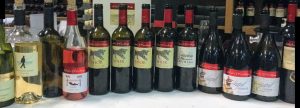 Shiloh currently produces wines across five different labels. Its entry-level series “Shiloh” includes a Rosé, Sauvignon Blanc, Chardonnay and a red blend dubbed Privilege. Amichai also has a new and not-yet-named white blend that is unlikely to be released, at least for the 2016 vintage. Next up comes is the Shor label, which includes the winery’s famous Barbera along with varietal versions of Cabernet Sauvignon and Cabernet Franc (not all are produced on an annual/consistent basis). Next up are the two Legend blends – Fiddler (the original Legend) and Choni (previously known as Legend II), named after the
Shiloh currently produces wines across five different labels. Its entry-level series “Shiloh” includes a Rosé, Sauvignon Blanc, Chardonnay and a red blend dubbed Privilege. Amichai also has a new and not-yet-named white blend that is unlikely to be released, at least for the 2016 vintage. Next up comes is the Shor label, which includes the winery’s famous Barbera along with varietal versions of Cabernet Sauvignon and Cabernet Franc (not all are produced on an annual/consistent basis). Next up are the two Legend blends – Fiddler (the original Legend) and Choni (previously known as Legend II), named after the  The winery’s reserve-level series is called Secret and it includes the varietal offerings of Cabernet Sauvignon, Merlot and Shiraz (the delightful Petite Sirah has yet to reappear as a varietal blend). As I mentioned above, for the 2014 vintage, Amichai produced a special sub-label within Secret dubbed – Hero’s Edition – three single vineyard Cabernet Sauvignon wines named after the owner of vineyard and paying homage to their steadfast religious beliefs in the face of potential economic adversity (these wines are only available in the US or through the winery). Finally the winery’s flagship label is the Mosaic blend which also includes an extra-special version called Mosaic Exclusive Edition in certain years. Historically Shiloh also produced a port-style wine called Fort which seems to have been discontinued for now and in 2007, Amichai produced a one-off dessert wine made from 100% late harvested Chardonnay grapes.
The winery’s reserve-level series is called Secret and it includes the varietal offerings of Cabernet Sauvignon, Merlot and Shiraz (the delightful Petite Sirah has yet to reappear as a varietal blend). As I mentioned above, for the 2014 vintage, Amichai produced a special sub-label within Secret dubbed – Hero’s Edition – three single vineyard Cabernet Sauvignon wines named after the owner of vineyard and paying homage to their steadfast religious beliefs in the face of potential economic adversity (these wines are only available in the US or through the winery). Finally the winery’s flagship label is the Mosaic blend which also includes an extra-special version called Mosaic Exclusive Edition in certain years. Historically Shiloh also produced a port-style wine called Fort which seems to have been discontinued for now and in 2007, Amichai produced a one-off dessert wine made from 100% late harvested Chardonnay grapes. As I constantly remind winemakers, while the winemakers responsibility to the wine is finished once it’s been bottled, the real work is only beginning. Wineries are ultimately businesses who need to make money by selling wine and most wine doesn’t sell itself. A winemaker who believes in and loves his job and product is among the most powerful marketing tools and Amichai takes this aspect of his job extremely seriously with great results. Constantly promoting the wines at every turn, Amichai effectively uses social media (primarily Facebook) to introduce an ever-increasing audience to his wines, typically accompanied by the ridiculous meat-driven endeavors he undertakes at every turn, using meat as an incredible receptacle and accompaniment for his wines. Every winemaker should take note as his playbook is stock full of what a winery should be doing if it wants to achieve commercial success to go with lovely wines. Obviously Amichai’s job is made easier by the simple fact that he truly loves what he does and believes in it on multiple levels, but any winemaker who can’t say the same thing about himself is probably in the wrong profession.
As I constantly remind winemakers, while the winemakers responsibility to the wine is finished once it’s been bottled, the real work is only beginning. Wineries are ultimately businesses who need to make money by selling wine and most wine doesn’t sell itself. A winemaker who believes in and loves his job and product is among the most powerful marketing tools and Amichai takes this aspect of his job extremely seriously with great results. Constantly promoting the wines at every turn, Amichai effectively uses social media (primarily Facebook) to introduce an ever-increasing audience to his wines, typically accompanied by the ridiculous meat-driven endeavors he undertakes at every turn, using meat as an incredible receptacle and accompaniment for his wines. Every winemaker should take note as his playbook is stock full of what a winery should be doing if it wants to achieve commercial success to go with lovely wines. Obviously Amichai’s job is made easier by the simple fact that he truly loves what he does and believes in it on multiple levels, but any winemaker who can’t say the same thing about himself is probably in the wrong profession.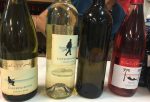 In addition to the wines listed below, from this series our tasting also included the 2016 Rose (a blend of Barbera (65%) and Cabernet Franc (35%)), the 2016 Sauvignon Blanc, sourced from Shiloh and Dalton and a 2016 experimental blend of Chardonnay and Sauvignon Blanc of which only two barrels were made and which will not be commercially released for this vintage.
In addition to the wines listed below, from this series our tasting also included the 2016 Rose (a blend of Barbera (65%) and Cabernet Franc (35%)), the 2016 Sauvignon Blanc, sourced from Shiloh and Dalton and a 2016 experimental blend of Chardonnay and Sauvignon Blanc of which only two barrels were made and which will not be commercially released for this vintage. winery’s adjacent vineyards, which spent 6 months aging in new 400 liter French oak barrels. The nose is subdued but opens up with air and some gentle warming in the hands to reveal lovely bright fresh notes of tart green apple, Bartlett pear, quince and fresh baked brioche tinged with toasty oak. Good acidity provides a solid backbone for the wine’s structure and plenty of warm spices and more rich fruit complete the picture for a lovely and delicious medium bodied wine. A lingering finish with more spice provides a pleasing reminder to refill your glass – an easy endeavor at 13.2% AbV. Drink now through 2018 [Shmitah / Only in Israel].
winery’s adjacent vineyards, which spent 6 months aging in new 400 liter French oak barrels. The nose is subdued but opens up with air and some gentle warming in the hands to reveal lovely bright fresh notes of tart green apple, Bartlett pear, quince and fresh baked brioche tinged with toasty oak. Good acidity provides a solid backbone for the wine’s structure and plenty of warm spices and more rich fruit complete the picture for a lovely and delicious medium bodied wine. A lingering finish with more spice provides a pleasing reminder to refill your glass – an easy endeavor at 13.2% AbV. Drink now through 2018 [Shmitah / Only in Israel]. We focused on the Barbera for purposes of this tasting – a grape that has historically done well for Shiloh with great acidity and rich expressive fruit. Our vertical tasting included the following vintages: 2008 (Drink Now), 2011, 2014 (in noticeable mevushal format) and the 2015 (Shmitah).
We focused on the Barbera for purposes of this tasting – a grape that has historically done well for Shiloh with great acidity and rich expressive fruit. Our vertical tasting included the following vintages: 2008 (Drink Now), 2011, 2014 (in noticeable mevushal format) and the 2015 (Shmitah). Shiloh, Privilege, Winemakers Blend, 2016: Shiloh’s new “mainstream” wine is a blend of Cabernet Sauvignon (65%), Syrah (18%), Cabernet Franc (12%) and Grenache (5%) which spent approximately 9 months aging with French oak, a small percentage of which was new. A sexy and expressive nose is loaded cherries, blackberries and tart raspberries is accentuated with a hint of blueberries along with black pepper, rich earth and a lovely overlay of floral notes on a well balanced backbone of good acidity and nicely integrated tannins and clocking in at 14.9% AbV. Drink now through 2018, maybe longer [mevushal].
Shiloh, Privilege, Winemakers Blend, 2016: Shiloh’s new “mainstream” wine is a blend of Cabernet Sauvignon (65%), Syrah (18%), Cabernet Franc (12%) and Grenache (5%) which spent approximately 9 months aging with French oak, a small percentage of which was new. A sexy and expressive nose is loaded cherries, blackberries and tart raspberries is accentuated with a hint of blueberries along with black pepper, rich earth and a lovely overlay of floral notes on a well balanced backbone of good acidity and nicely integrated tannins and clocking in at 14.9% AbV. Drink now through 2018, maybe longer [mevushal]. Following the trend popularized by Carmel with their eponymously named
Following the trend popularized by Carmel with their eponymously named 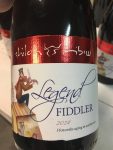 Legend, the wine is a blend of Petite Sirah (39%), Petite Verdot (32%) and Shiraz (29%) which spent 16 months in 25% new French and American oak. With a rich and ripe nose of black plums, cassis, crushed black forest berries, spicy oak, baker’s chocolate and cigar box, the wine’s rich and expressive nose is an accurate precursor to the fleshy and rich full bodied palate that follows. While slightly sweeter than I would like, the wine will be loved by most and is a deliciously rich wine on a well balanced background of rustic tannins and good acidity that will continue to improve in the bottle over the next few years. 14.6% AbV. Drink 2018-2021 (this note refers to the non-mevushal version but the US will only receive the mevushal version).
Legend, the wine is a blend of Petite Sirah (39%), Petite Verdot (32%) and Shiraz (29%) which spent 16 months in 25% new French and American oak. With a rich and ripe nose of black plums, cassis, crushed black forest berries, spicy oak, baker’s chocolate and cigar box, the wine’s rich and expressive nose is an accurate precursor to the fleshy and rich full bodied palate that follows. While slightly sweeter than I would like, the wine will be loved by most and is a deliciously rich wine on a well balanced background of rustic tannins and good acidity that will continue to improve in the bottle over the next few years. 14.6% AbV. Drink 2018-2021 (this note refers to the non-mevushal version but the US will only receive the mevushal version). popular Legend II, the wine’s title pays homage to the Talmudic sage Choni HaMa’agel who is best known for his successful stand-off with G-d that yielded desperately needed rain as a respite for the drought-induced parched earth but has a
popular Legend II, the wine’s title pays homage to the Talmudic sage Choni HaMa’agel who is best known for his successful stand-off with G-d that yielded desperately needed rain as a respite for the drought-induced parched earth but has a 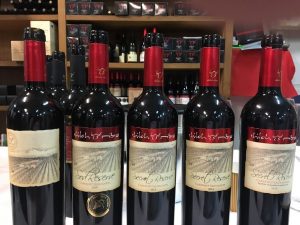 Our tasting included a mini vertical for each of the three varietal wines in the secret (“Sod”) series which typically spend 18 months in French oak – Shiraz (2008. 2009 and 2010), Cabernet Sauvignon (2006, 2008, 2013, 2014 and 2015) and Merlot (2009 and 2014). While I find that Shiloh’s best grape is Merlot, the varietal Cabernet Sauvignon is the star of this series as Amichai utilizes the best barrels of Merlot for the winery’s flagship Mosaic.
Our tasting included a mini vertical for each of the three varietal wines in the secret (“Sod”) series which typically spend 18 months in French oak – Shiraz (2008. 2009 and 2010), Cabernet Sauvignon (2006, 2008, 2013, 2014 and 2015) and Merlot (2009 and 2014). While I find that Shiloh’s best grape is Merlot, the varietal Cabernet Sauvignon is the star of this series as Amichai utilizes the best barrels of Merlot for the winery’s flagship Mosaic. inaugural wines that benefited from his multiple experiments with various barrels, as only his favorites made it into this varietal wine. Still showing the great structure and balanced acidity from its youth, the wine provides plenty of tertiary notes including well-worn saddle leather, earthy minerals and anise while the spicy oak has taken on a more dominant role. Sliding past peak, the wine needs a little bit of air to “put its face on” but is still enjoyable at “only” 13.9% AbV with sweet red fruit and plenty of Shiloh’s characteristic good acidity keeping things real along with the 16 months the wine spent aging in French oak, at least for a little while longer. Drink now.
inaugural wines that benefited from his multiple experiments with various barrels, as only his favorites made it into this varietal wine. Still showing the great structure and balanced acidity from its youth, the wine provides plenty of tertiary notes including well-worn saddle leather, earthy minerals and anise while the spicy oak has taken on a more dominant role. Sliding past peak, the wine needs a little bit of air to “put its face on” but is still enjoyable at “only” 13.9% AbV with sweet red fruit and plenty of Shiloh’s characteristic good acidity keeping things real along with the 16 months the wine spent aging in French oak, at least for a little while longer. Drink now. shift to higher quality vineyards and oak barrels and reflecting the qualitative upgrade, this is a very nice wine. With plenty of ripe and extracted rich black and red fruit including blackberries, plums, cherries, cassis and a hint of red plums, the wine is dominated by powerful but controlled tannins and spicy oak that need time to settle down. Give the wine an hour or so of air in order to reap the benefits of the rich fruit, cigar box, a pleasing whiff of smoke and a herbal overlay with nuances of minty chocolate; and enjoy this powerful and well made blockbuster of a wine that clocks in at 15.1% AbV and lingers long. A little on the sweet side for my personal tastes, the wine will be well-received by Shiloh’s many adoring fans and justifiably so. Drink now (with an hour of decanting) through 2022, maybe longer [non-mevushal but there is also a mevushal version].
shift to higher quality vineyards and oak barrels and reflecting the qualitative upgrade, this is a very nice wine. With plenty of ripe and extracted rich black and red fruit including blackberries, plums, cherries, cassis and a hint of red plums, the wine is dominated by powerful but controlled tannins and spicy oak that need time to settle down. Give the wine an hour or so of air in order to reap the benefits of the rich fruit, cigar box, a pleasing whiff of smoke and a herbal overlay with nuances of minty chocolate; and enjoy this powerful and well made blockbuster of a wine that clocks in at 15.1% AbV and lingers long. A little on the sweet side for my personal tastes, the wine will be well-received by Shiloh’s many adoring fans and justifiably so. Drink now (with an hour of decanting) through 2022, maybe longer [non-mevushal but there is also a mevushal version]. version but having spent only 18 months in French oak, the wine shows sweeter fruit than the 2013 vintage but showcases even better structure and a more harmonious blending of the wine’s various components. Loaded with a rich and expressive nose of ripe blackberries, dark cherries, black currants along with plenty of rich dark chocolate, mocha and warm roasted herbs enhanced by Oriental spices, the wine slowly reveals layer after layer of complexity if you can give it the time it needs (and enjoy the sweet fruit). More approachable now than the 2013 and better made, it will continue to improve in the bottle over the next few years but will likely evolve a little less than its younger sibling. 15.3% AbV. Drink now through 2022 [mevushal but also produced in a non-mevushal version].
version but having spent only 18 months in French oak, the wine shows sweeter fruit than the 2013 vintage but showcases even better structure and a more harmonious blending of the wine’s various components. Loaded with a rich and expressive nose of ripe blackberries, dark cherries, black currants along with plenty of rich dark chocolate, mocha and warm roasted herbs enhanced by Oriental spices, the wine slowly reveals layer after layer of complexity if you can give it the time it needs (and enjoy the sweet fruit). More approachable now than the 2013 and better made, it will continue to improve in the bottle over the next few years but will likely evolve a little less than its younger sibling. 15.3% AbV. Drink now through 2022 [mevushal but also produced in a non-mevushal version].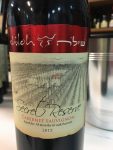 Royal Wines (Shiloh’s US importer) doesn’t import Shmitah year wines; this vintage was made solely for the domestic market and is only available as a non-mevushal wine. Continuing the upward qualitative trajectory, the wine is well made with good balance and structure and should age nicely with continued improvement in the bottle. Blackberries, black cherries, ripe plums and chocolate dominate the nose along with nice notes of toasty oak, sage, eucalyptus and fresh pulled espresso, much of which continues onto the full bodied luxurious palate which is currently dominated by powerfully robust tannins that need time to settle down. Give the wine a chance and you will be rewarded with layers of rich but controlled mostly black fruit with a lovely herbacousness, dark chocolate, slightly smoky oak and cedar wood providing lovely complexity and a pleasing deliciousness that makes this wine a worthy acquisition. 14.7% AbV. At this point, the wine needs at least 2 hours of decanting and I’d hold off drinking for another 12 months at least before drinking from 2019 through 2024 [Shmitah / Only in Israel].
Royal Wines (Shiloh’s US importer) doesn’t import Shmitah year wines; this vintage was made solely for the domestic market and is only available as a non-mevushal wine. Continuing the upward qualitative trajectory, the wine is well made with good balance and structure and should age nicely with continued improvement in the bottle. Blackberries, black cherries, ripe plums and chocolate dominate the nose along with nice notes of toasty oak, sage, eucalyptus and fresh pulled espresso, much of which continues onto the full bodied luxurious palate which is currently dominated by powerfully robust tannins that need time to settle down. Give the wine a chance and you will be rewarded with layers of rich but controlled mostly black fruit with a lovely herbacousness, dark chocolate, slightly smoky oak and cedar wood providing lovely complexity and a pleasing deliciousness that makes this wine a worthy acquisition. 14.7% AbV. At this point, the wine needs at least 2 hours of decanting and I’d hold off drinking for another 12 months at least before drinking from 2019 through 2024 [Shmitah / Only in Israel]. varietal and the least oftenly made (and never in mevushal form), approximately 60% of the grapes are sourced from the winery’s Shomron vineyards with the rest coming from the Dalton area. As with the other Secret wines, it spent between 18-20 months in mostly new French oak before being bottled. While showing good capacity for oak, the spicy oak was a little too dominant for my personal tastes, even 8 years past harvest. However the wine is still incredibly closed and tight with good structure that bodes well for the coming years and 2 hours of air softened the oak dominance somewhat (which allowed the lovely fruit and earthy minerals to shine through along with the characteristic herbal overlay that defines many of Shiloh’s wines). 14.5% AbV. Potentially a powerhouse of a wine that has plenty to offer, I’d hold out opening any remaining bottles for another 6-12 months before giving the wine another try – chances are you’ll be pleasantly surprised and if so, the wine should cellar comfortably through 2020.
varietal and the least oftenly made (and never in mevushal form), approximately 60% of the grapes are sourced from the winery’s Shomron vineyards with the rest coming from the Dalton area. As with the other Secret wines, it spent between 18-20 months in mostly new French oak before being bottled. While showing good capacity for oak, the spicy oak was a little too dominant for my personal tastes, even 8 years past harvest. However the wine is still incredibly closed and tight with good structure that bodes well for the coming years and 2 hours of air softened the oak dominance somewhat (which allowed the lovely fruit and earthy minerals to shine through along with the characteristic herbal overlay that defines many of Shiloh’s wines). 14.5% AbV. Potentially a powerhouse of a wine that has plenty to offer, I’d hold out opening any remaining bottles for another 6-12 months before giving the wine another try – chances are you’ll be pleasantly surprised and if so, the wine should cellar comfortably through 2020.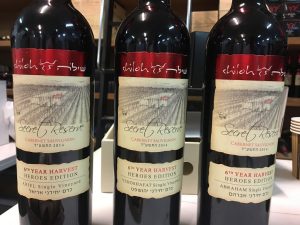 As noted above, this special series pays homage to the hero Jewish farmer’s who keep Shmitah in the face of potential economic adversity while trusting G-d to keep his promise and provide extra bounty during the pre-Shmitah vintage (in this case, the 2014 vintage). Only available in the US and directly from the winery, the wine is sold as a set of three single vineyard Cabernet Sauvignon wines, each labeled with the vineyard’s owner in tribute to their religious heroism (and marked as a “unique” vineyard in Hebrew instead of “single”).
As noted above, this special series pays homage to the hero Jewish farmer’s who keep Shmitah in the face of potential economic adversity while trusting G-d to keep his promise and provide extra bounty during the pre-Shmitah vintage (in this case, the 2014 vintage). Only available in the US and directly from the winery, the wine is sold as a set of three single vineyard Cabernet Sauvignon wines, each labeled with the vineyard’s owner in tribute to their religious heroism (and marked as a “unique” vineyard in Hebrew instead of “single”).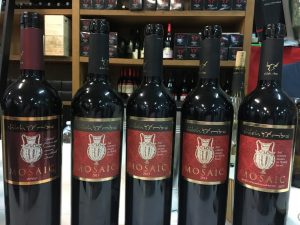 Amichai ages each component separately for 11 months before building the final blend which spends another seven months in oak getting acquainted. Historically the winery held on to the wine for an additional 1-2 years of bottle aging but increased market demand in recent years has required earlier release (and thus less bottle aging at the winery). Placing the region’s acclaimed front and center, the winery’s flagship blend has been showing marked improvement in recent years. In addition to the wines listed below, we also tasted the 2007 (which is in Drink Now mode), the 2013 and the 2015 Shmitah version (an advance tasting which will only be available in Israel). While the inaugural 2006 vintage wasn’t part of our tasting, recent tastings indicate the wine is showing very nicely, with one or two years of solid drinking ahead of it, so drink now.
Amichai ages each component separately for 11 months before building the final blend which spends another seven months in oak getting acquainted. Historically the winery held on to the wine for an additional 1-2 years of bottle aging but increased market demand in recent years has required earlier release (and thus less bottle aging at the winery). Placing the region’s acclaimed front and center, the winery’s flagship blend has been showing marked improvement in recent years. In addition to the wines listed below, we also tasted the 2007 (which is in Drink Now mode), the 2013 and the 2015 Shmitah version (an advance tasting which will only be available in Israel). While the inaugural 2006 vintage wasn’t part of our tasting, recent tastings indicate the wine is showing very nicely, with one or two years of solid drinking ahead of it, so drink now. (21%), Petit Verdot (20%) and Cabernet Sauvignon (14%) that spent a collective 20 months in French oak, the wine is rich and powerful with an understated elegance that bodes well for its future. A lovely wine with great structure and terrific balance, the nose is very tight and requires hours of air (or vigorous swirling) before one can enjoy the black fruit, tart cherries, ripe plums, currants, and other ripe sweet fruit that are controlled and provide a pleasing contra to the toasty oak, minerals and roasted herbs that are enhanced by brown sweet spices and just-cracked black pepper. Powerful, elegant and delicious but not as complex as one would have expected. 14.7% AbV. Drink now through 2020 [mevushal but also produced in a non-mevushal version].
(21%), Petit Verdot (20%) and Cabernet Sauvignon (14%) that spent a collective 20 months in French oak, the wine is rich and powerful with an understated elegance that bodes well for its future. A lovely wine with great structure and terrific balance, the nose is very tight and requires hours of air (or vigorous swirling) before one can enjoy the black fruit, tart cherries, ripe plums, currants, and other ripe sweet fruit that are controlled and provide a pleasing contra to the toasty oak, minerals and roasted herbs that are enhanced by brown sweet spices and just-cracked black pepper. Powerful, elegant and delicious but not as complex as one would have expected. 14.7% AbV. Drink now through 2020 [mevushal but also produced in a non-mevushal version].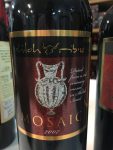 Sauvignon (73%), Syrah (21%) and Cabernet Franc (6%) which spent 20 months aging in 60% new French oak barrels, the wine was initially intended as a one-off production intended to take advantage of some extra special barrels Amichai felt were exceptionally extraordinary and deserving of a separate stage from which to shine. Given the commercial success of the inaugural limited edition of 3,800 bottles and the subsequent exceptional 2014 vintage year, the winery can be forgiven for producing it again for 2014, but we shall see if it remains a very special wine that justifies the almost double retail price or becomes a regular staple of Shiloh’s expanding portfolio. Rich, deep and brooding with nicely integrating and caressing tannin that still needs time and great acidity providing a core around which the ripe sweet black fruit, blueberry, cassis, minerals and toasty oak come together in harmonious balance with rosemary, eucalyptus and sage providing some pleasing bitterness along with prunes, dried fruit, warm spices, fresh-cracked black pepper and rich dark chocolate with some lavender and floral nuances and a long lingering and caressing finish packed with more warm spices and star anise. 14.3% AbV. Drink now through 2022.
Sauvignon (73%), Syrah (21%) and Cabernet Franc (6%) which spent 20 months aging in 60% new French oak barrels, the wine was initially intended as a one-off production intended to take advantage of some extra special barrels Amichai felt were exceptionally extraordinary and deserving of a separate stage from which to shine. Given the commercial success of the inaugural limited edition of 3,800 bottles and the subsequent exceptional 2014 vintage year, the winery can be forgiven for producing it again for 2014, but we shall see if it remains a very special wine that justifies the almost double retail price or becomes a regular staple of Shiloh’s expanding portfolio. Rich, deep and brooding with nicely integrating and caressing tannin that still needs time and great acidity providing a core around which the ripe sweet black fruit, blueberry, cassis, minerals and toasty oak come together in harmonious balance with rosemary, eucalyptus and sage providing some pleasing bitterness along with prunes, dried fruit, warm spices, fresh-cracked black pepper and rich dark chocolate with some lavender and floral nuances and a long lingering and caressing finish packed with more warm spices and star anise. 14.3% AbV. Drink now through 2022.
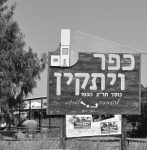 While its recent relocation may throw you off, the winery carries the name of the eponymous village where it was founded in 2002 after a non-commercial 2001 vintage where less than 300 bottles were made and shared among friends and family. The village itself is named for Yosef Vitkin, whose moving appeal in 1905 was hugely influential on encouraging thousands of young Eastern European Jews to move to the land of Israel and who constituted a huge part of Israel’s influential
While its recent relocation may throw you off, the winery carries the name of the eponymous village where it was founded in 2002 after a non-commercial 2001 vintage where less than 300 bottles were made and shared among friends and family. The village itself is named for Yosef Vitkin, whose moving appeal in 1905 was hugely influential on encouraging thousands of young Eastern European Jews to move to the land of Israel and who constituted a huge part of Israel’s influential  During a brief stint with the Belogolovsky’s, Asaf’s passion for winemaking and Doron’s love of wine kindled the idea of a collective winery which rapidly materialized into the initial 2001 vintage (which ironically as you will soon see, was made from 100% Cabernet Sauvignon sourced from a Golan Heights vineyard with the help of Asaf’s old boss from his baker days. Doron made the wine with Asaf providing constant advice and oversight from 6,000 miles away where he was interning in California’s Anderson Valley Navarro Vineyards. With a successful mini-vintage under their belt, the duo turned to Asaf’s true love for the winery’s first commercial vintage in 2002, leaving the Cabernet Sauvignon behind and turning to what would be the winery’s focus – Mediterranean and varietals being under-utilized in Israel, with the first bunch including Carignan, Petite Sirah, Cabernet Franc and a true novelty – a dry Muscat.
During a brief stint with the Belogolovsky’s, Asaf’s passion for winemaking and Doron’s love of wine kindled the idea of a collective winery which rapidly materialized into the initial 2001 vintage (which ironically as you will soon see, was made from 100% Cabernet Sauvignon sourced from a Golan Heights vineyard with the help of Asaf’s old boss from his baker days. Doron made the wine with Asaf providing constant advice and oversight from 6,000 miles away where he was interning in California’s Anderson Valley Navarro Vineyards. With a successful mini-vintage under their belt, the duo turned to Asaf’s true love for the winery’s first commercial vintage in 2002, leaving the Cabernet Sauvignon behind and turning to what would be the winery’s focus – Mediterranean and varietals being under-utilized in Israel, with the first bunch including Carignan, Petite Sirah, Cabernet Franc and a true novelty – a dry Muscat. From the winery’s inception until leaving his day job at Segal in 2014, Asaf juggled his winemaking day jobs at Tishbi, Carmel, Binyamina and Segal with a full-time second day job at Vitkin where he partnered with Doron in producing top-quality wines that rapidly won over much of Israel’s wine cognoscenti. Launched amid the second coming of Israeli boutique wineries (following the first wave from the early 1990s), Vitkin immediately stood out among the other wineries representing the second wave of Israeli boutique wineries. Beyond the quality winemaking, humility and obvious pride in their product, the trio of Doron, Sharona and Asaf had made a conscious effort to focus on varietals they felt were most suited for the hot Mediterannean climate Israel is renowned for while ignoring the more popular Bordeaux varietals the general wine-consuming public seems to crave so much. While these days, phrases like Mediterranean varietals and winemaking have achieved near cliché-like status due to their overuse, Vitkin was truly a pioneer of this approach utilizing cast-off Israeli varietals like French Columbard, Carignan and Petite Sirah from day one, remains a firm believer in its values and continues to push the concept forward with every vintage. They also felt that the commercial viability of a boutique winery with all its accompanying cost saving related inefficiencies shouldn’t be predicated on the Cabernet Sauvignon, Merlot and Chardonnay produced by all the large commercial wineries in mega quantities and across multiple qualitative levels (and price points).
From the winery’s inception until leaving his day job at Segal in 2014, Asaf juggled his winemaking day jobs at Tishbi, Carmel, Binyamina and Segal with a full-time second day job at Vitkin where he partnered with Doron in producing top-quality wines that rapidly won over much of Israel’s wine cognoscenti. Launched amid the second coming of Israeli boutique wineries (following the first wave from the early 1990s), Vitkin immediately stood out among the other wineries representing the second wave of Israeli boutique wineries. Beyond the quality winemaking, humility and obvious pride in their product, the trio of Doron, Sharona and Asaf had made a conscious effort to focus on varietals they felt were most suited for the hot Mediterannean climate Israel is renowned for while ignoring the more popular Bordeaux varietals the general wine-consuming public seems to crave so much. While these days, phrases like Mediterranean varietals and winemaking have achieved near cliché-like status due to their overuse, Vitkin was truly a pioneer of this approach utilizing cast-off Israeli varietals like French Columbard, Carignan and Petite Sirah from day one, remains a firm believer in its values and continues to push the concept forward with every vintage. They also felt that the commercial viability of a boutique winery with all its accompanying cost saving related inefficiencies shouldn’t be predicated on the Cabernet Sauvignon, Merlot and Chardonnay produced by all the large commercial wineries in mega quantities and across multiple qualitative levels (and price points). In addition to focusing on so-called Mediterranean varietals, Vitkin also produces wines from decidedly non-Mediterannean varietals like Pinot Noir and Riesling. However, different from most Israeli wineries experimenting with these grapes, Vitkin avoids the usual pitfall of styling them after their country of origin (Burgundy and Germany respectively) and infuses them with a healthy dose of Israeli character, taking into consideration the significant differences in climate and yielding delightful results.
In addition to focusing on so-called Mediterranean varietals, Vitkin also produces wines from decidedly non-Mediterannean varietals like Pinot Noir and Riesling. However, different from most Israeli wineries experimenting with these grapes, Vitkin avoids the usual pitfall of styling them after their country of origin (Burgundy and Germany respectively) and infuses them with a healthy dose of Israeli character, taking into consideration the significant differences in climate and yielding delightful results. Other than a small vineyard in Kfar Vitkin which allows for experimenting with new varietals and the area’s micro-climate and a couple of rows of experimental vines growing outside the winery, Vitkin doesn’t own any vineyards. Rather, similar to most Israeli wineries, they have long term leases that provide it total control over the planting, caring for and harvesting of the vineyards. Vitkin sources its wines from vineyards spread across the country starting with the Golan Heights and Upper Galilee in Israel’s North down to the historic Zichron Ya’acov area all the way to the burgeoning premium wine region of the Judean Hills.
Other than a small vineyard in Kfar Vitkin which allows for experimenting with new varietals and the area’s micro-climate and a couple of rows of experimental vines growing outside the winery, Vitkin doesn’t own any vineyards. Rather, similar to most Israeli wineries, they have long term leases that provide it total control over the planting, caring for and harvesting of the vineyards. Vitkin sources its wines from vineyards spread across the country starting with the Golan Heights and Upper Galilee in Israel’s North down to the historic Zichron Ya’acov area all the way to the burgeoning premium wine region of the Judean Hills.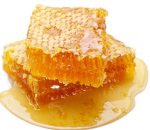 Asaf’s love of dessert wines is well documented with his being behind Carmel’s late harvested Sha’al Gewurztraminer and Binyamina’s similar wine he created while there. Historically Vitkin had a whole line showcasing his love of the genre (with a focus on the German style as opposed to that of Sauternes). While he hasn’t made any kosher versions yet, hopefully the right conditions will come along soon and we will be blessed with some more great dessert options as well.
Asaf’s love of dessert wines is well documented with his being behind Carmel’s late harvested Sha’al Gewurztraminer and Binyamina’s similar wine he created while there. Historically Vitkin had a whole line showcasing his love of the genre (with a focus on the German style as opposed to that of Sauternes). While he hasn’t made any kosher versions yet, hopefully the right conditions will come along soon and we will be blessed with some more great dessert options as well.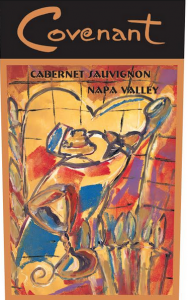
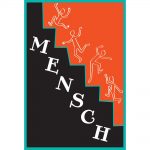 Mensch
Mensch The Tribe
The Tribe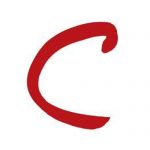 Red C
Red C Covenant, Lavan, Chardonnay, 2014: While many of the self-declared wine sophisticates were off beating the unoaked-Chardonnay drums, Covenant continued to make the wine they wanted to – rich and buttery Chardonnays that were well made and boasted gobs of mouth-watering acidity all in fine balance with the toasty oak and rich fruit yielding a highly pleasurable drink. Unfortunately the one-time magnificence from the Bacigalupi Vineyard was not to be repeated but the current source – Scopus Vineyard – has been providing great fruit for the last few years as well. 16 months in 10% new French oak and full
Covenant, Lavan, Chardonnay, 2014: While many of the self-declared wine sophisticates were off beating the unoaked-Chardonnay drums, Covenant continued to make the wine they wanted to – rich and buttery Chardonnays that were well made and boasted gobs of mouth-watering acidity all in fine balance with the toasty oak and rich fruit yielding a highly pleasurable drink. Unfortunately the one-time magnificence from the Bacigalupi Vineyard was not to be repeated but the current source – Scopus Vineyard – has been providing great fruit for the last few years as well. 16 months in 10% new French oak and full 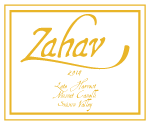 Covenant, Zahav, Late Harvest Muscat Canelli, 2014: The first dessert wine from Covenant and the brainchild of its “other” winemaker” – the uber-talented Jonathan Hajdu. 100% late-harvested Muscat from Babcock Vineyard located in the Suisun Valley, the wine opens with an intoxicating nose redolent with ripe peach and apricot alongside tropical notes of guava, candied hazelnuts, spice and loads of slightly spicy honeysuckle and sweet honey with orange citrus and a hint of raisins as well. The full bodied palate is viscous with good acidity balancing out the rich fruits and intense sweetness (although I personally would have preferred a little more acidity) and a lovely lingering finish with more honey, candied nuts and a whiff of toasty oak. Drink now through 2024, maybe longer.
Covenant, Zahav, Late Harvest Muscat Canelli, 2014: The first dessert wine from Covenant and the brainchild of its “other” winemaker” – the uber-talented Jonathan Hajdu. 100% late-harvested Muscat from Babcock Vineyard located in the Suisun Valley, the wine opens with an intoxicating nose redolent with ripe peach and apricot alongside tropical notes of guava, candied hazelnuts, spice and loads of slightly spicy honeysuckle and sweet honey with orange citrus and a hint of raisins as well. The full bodied palate is viscous with good acidity balancing out the rich fruits and intense sweetness (although I personally would have preferred a little more acidity) and a lovely lingering finish with more honey, candied nuts and a whiff of toasty oak. Drink now through 2024, maybe longer. Covenant Israel
Covenant Israel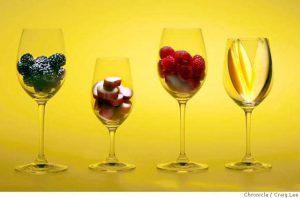 March 10, 2017 (Purim Satire)
March 10, 2017 (Purim Satire) Manischewitz Winery, Cherry Wine, n.v.: Another hit from the near-cultish Manischewitz winery that, despite the bad rap it gets from today’s current crop of wine snobs, is single-handedly responsible for putting kosher wine on the map and honorable represented the genre for decades at everyone’s traditional Passover Seder. Robust and full-bodied, the wine is redolent with sugar that is in complete balance with the cherry flavors that remind one of grandma’s fresh-baked cherry pies. We are lucky enough to have such a delicious wine all on its own but this fruit-based treat is mevushal to boot making it truly a wine for the ages and a mild-mannered 11% AbV. Drink now through 2132.
Manischewitz Winery, Cherry Wine, n.v.: Another hit from the near-cultish Manischewitz winery that, despite the bad rap it gets from today’s current crop of wine snobs, is single-handedly responsible for putting kosher wine on the map and honorable represented the genre for decades at everyone’s traditional Passover Seder. Robust and full-bodied, the wine is redolent with sugar that is in complete balance with the cherry flavors that remind one of grandma’s fresh-baked cherry pies. We are lucky enough to have such a delicious wine all on its own but this fruit-based treat is mevushal to boot making it truly a wine for the ages and a mild-mannered 11% AbV. Drink now through 2132. ery, Danue, Pomegranate Wine, n.v.: Competing with the Rimon winery offerings below for Israel’s best wine, the fresh fruit, sweet/sour, of the ‘Wonderful’ species, squeezed when it is at the peak of its ripeness, undergoes a fermentation process after which it is aged for a minimum of 12 months in stainless steel vats. Pomegranates are effective in lowering blood pressure, sugar, and cholesterol levels and are also rich in anti-oxidants and therefore the more of this amazing wine you drink the better.
ery, Danue, Pomegranate Wine, n.v.: Competing with the Rimon winery offerings below for Israel’s best wine, the fresh fruit, sweet/sour, of the ‘Wonderful’ species, squeezed when it is at the peak of its ripeness, undergoes a fermentation process after which it is aged for a minimum of 12 months in stainless steel vats. Pomegranates are effective in lowering blood pressure, sugar, and cholesterol levels and are also rich in anti-oxidants and therefore the more of this amazing wine you drink the better.